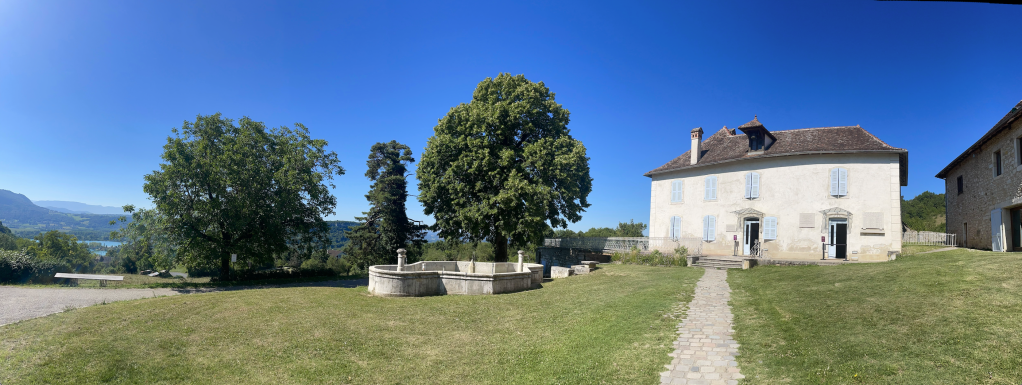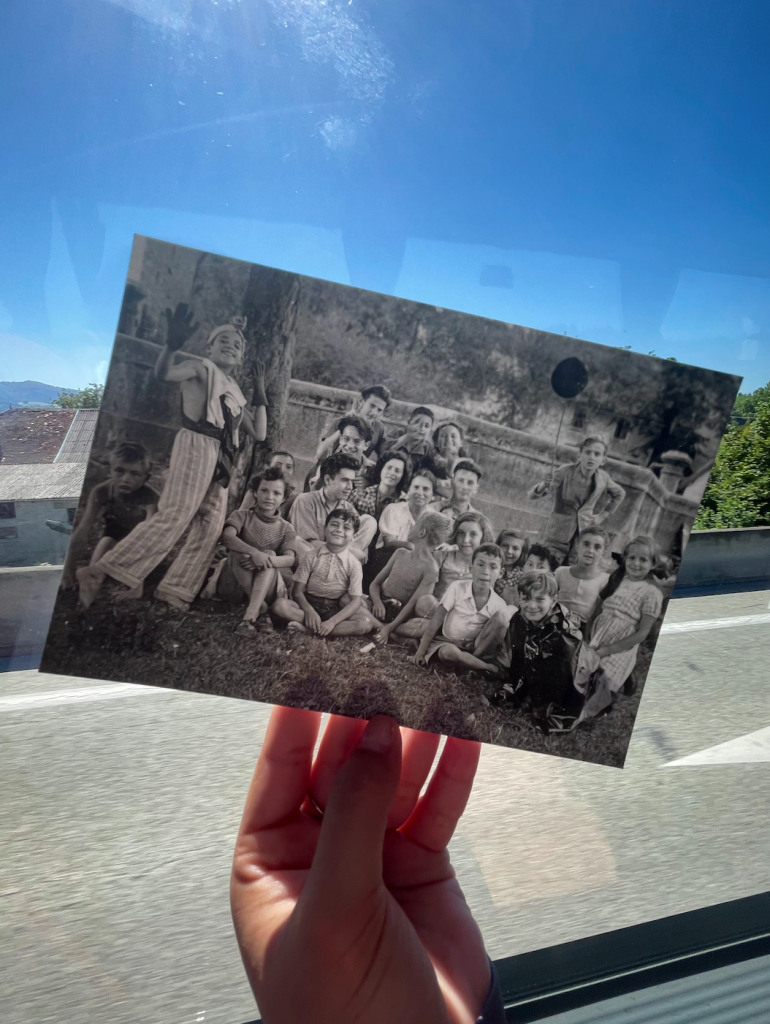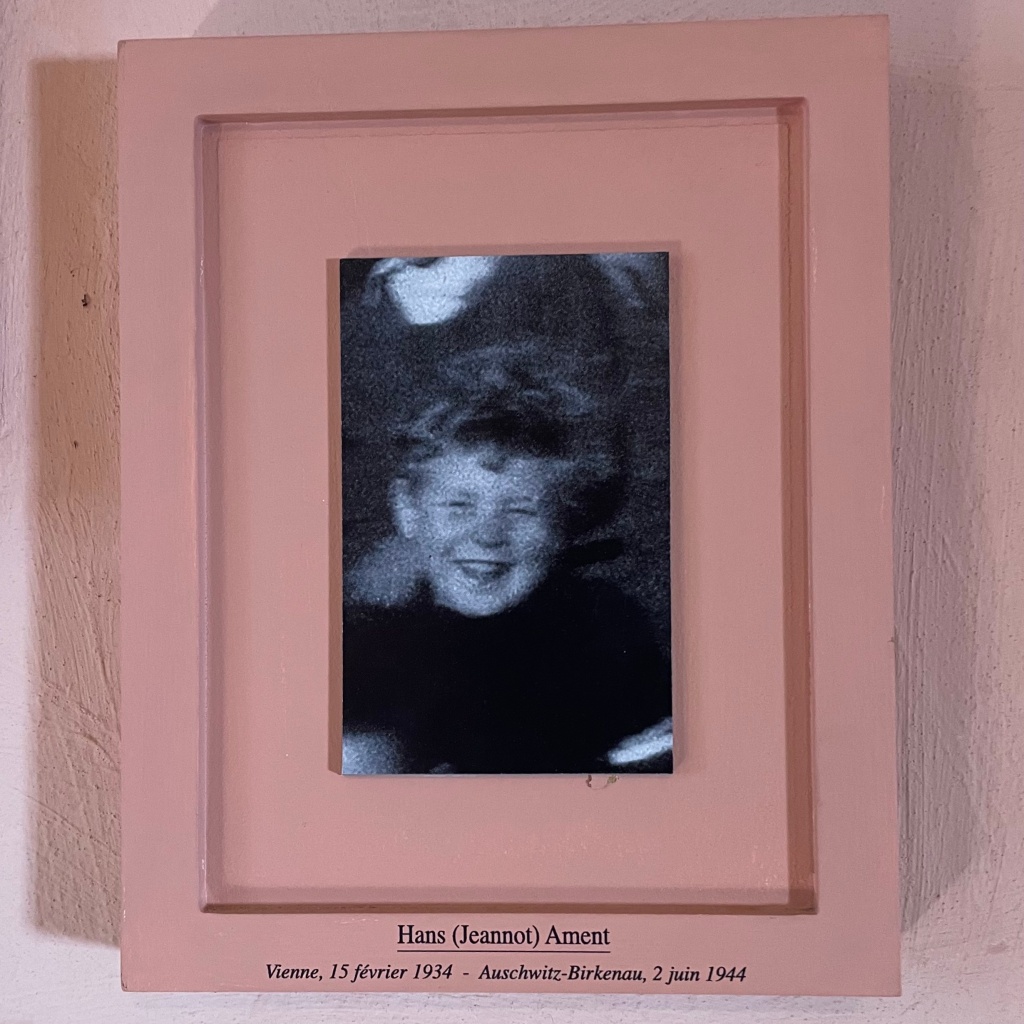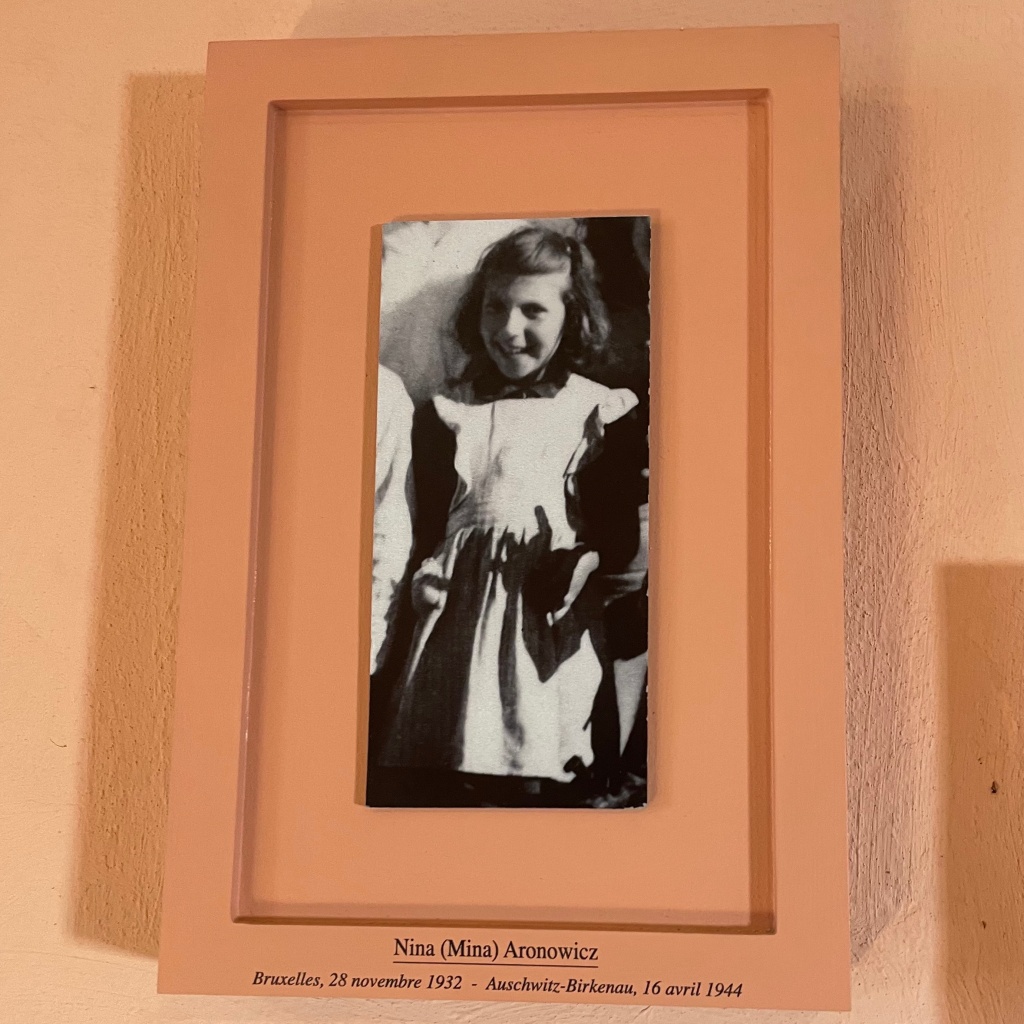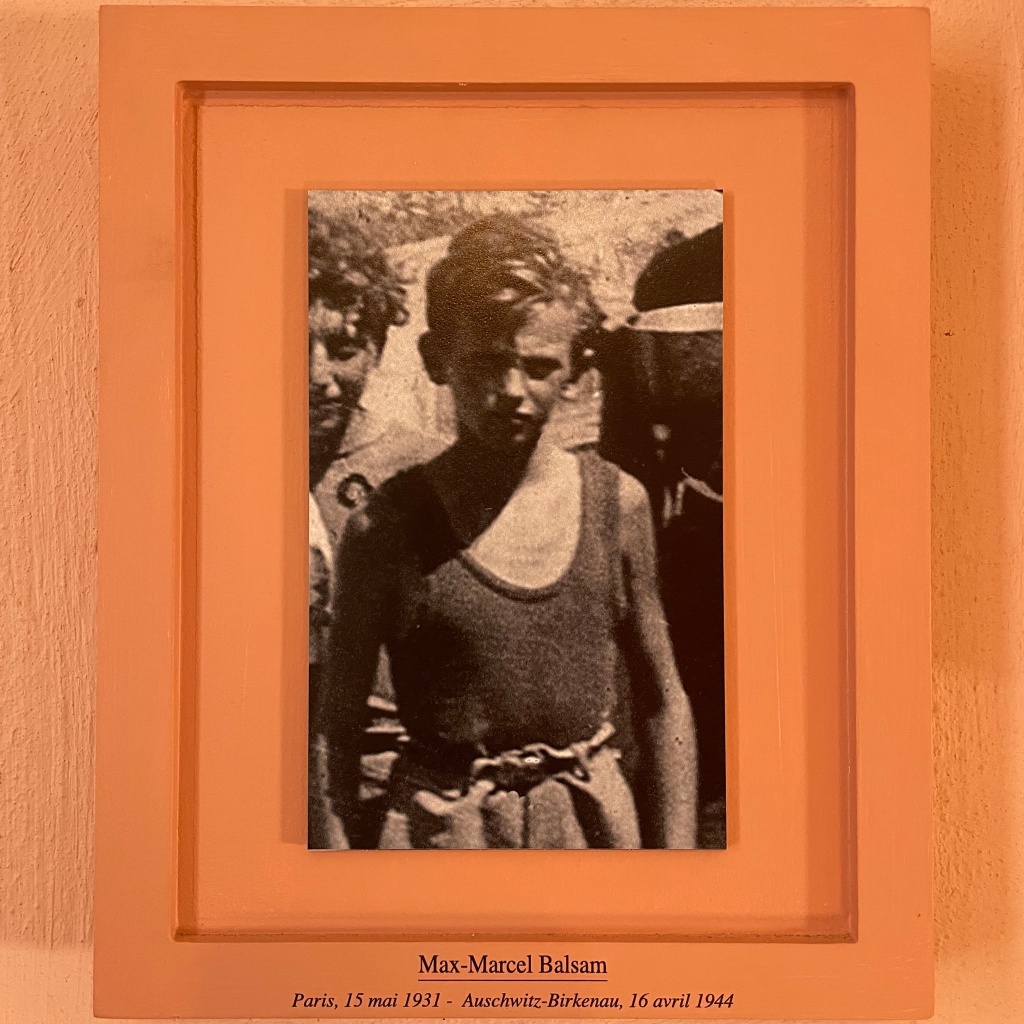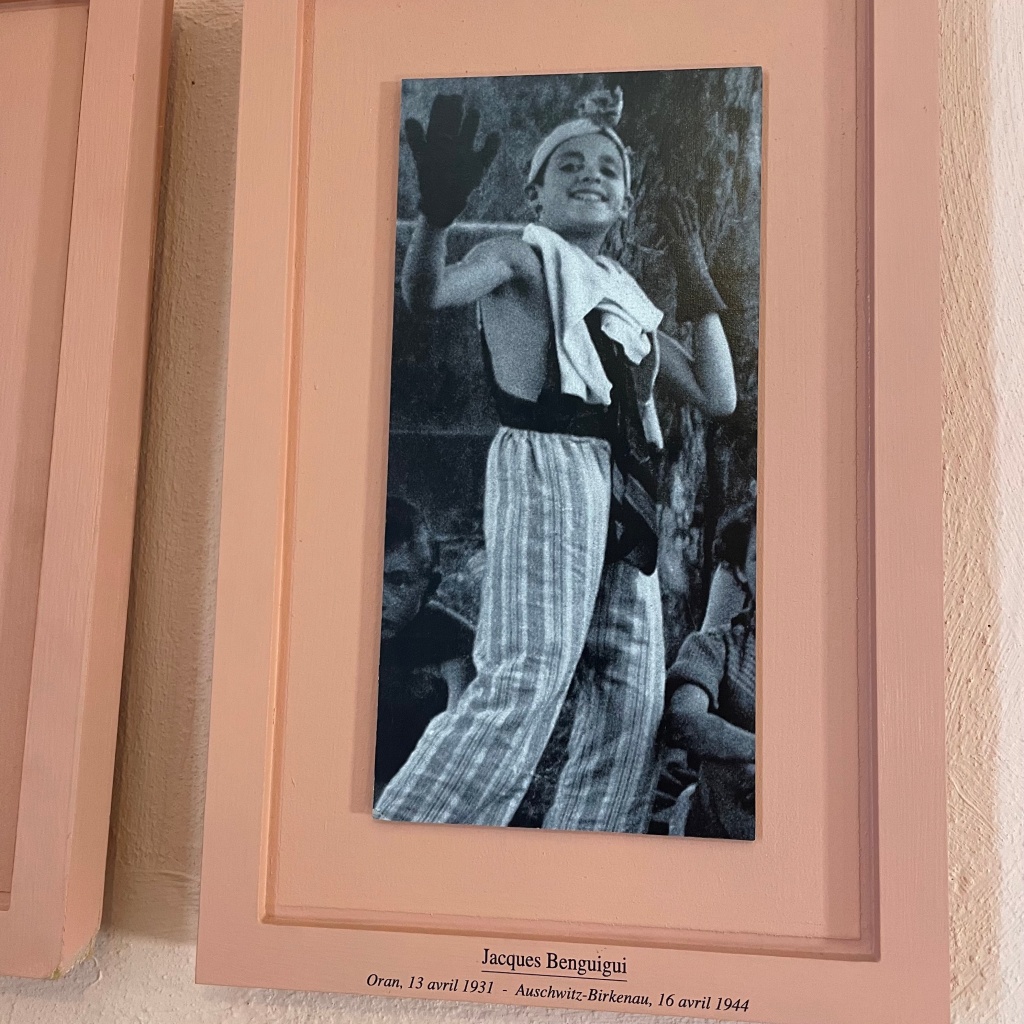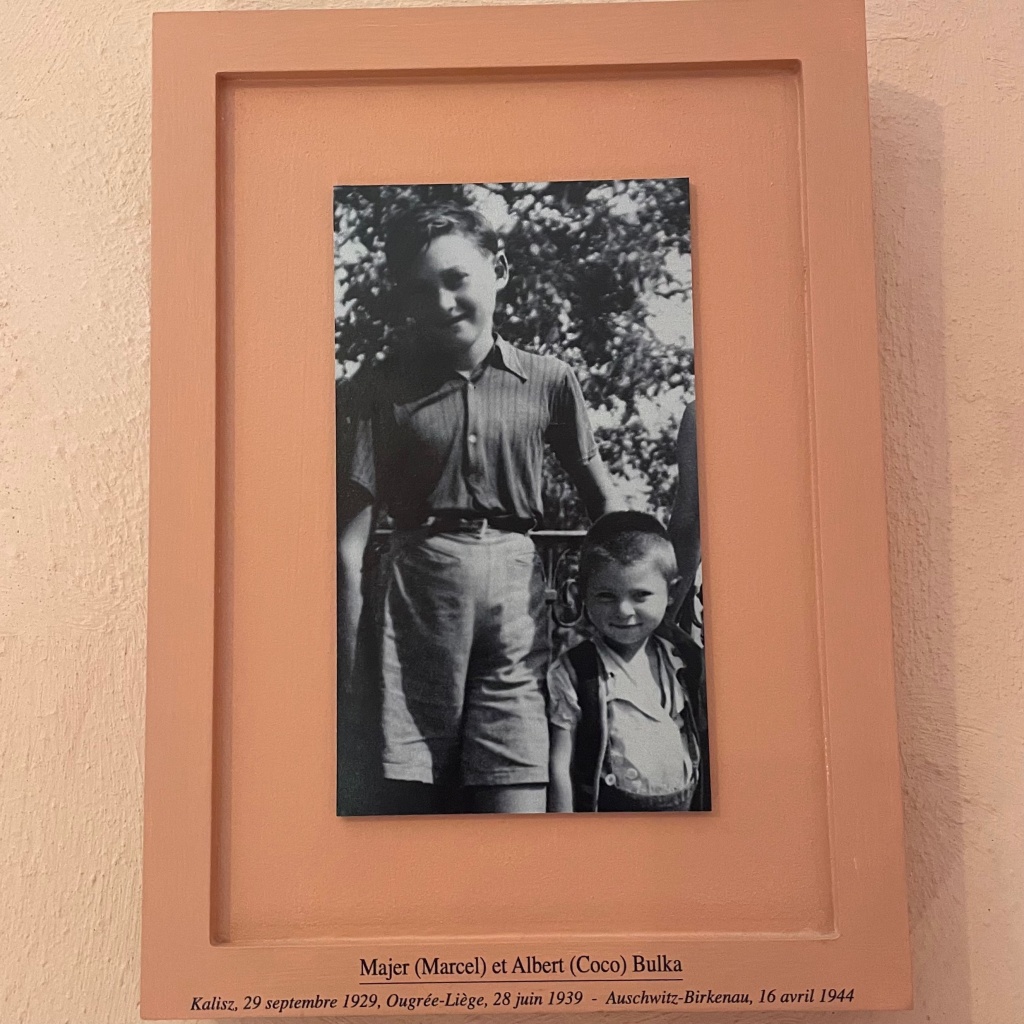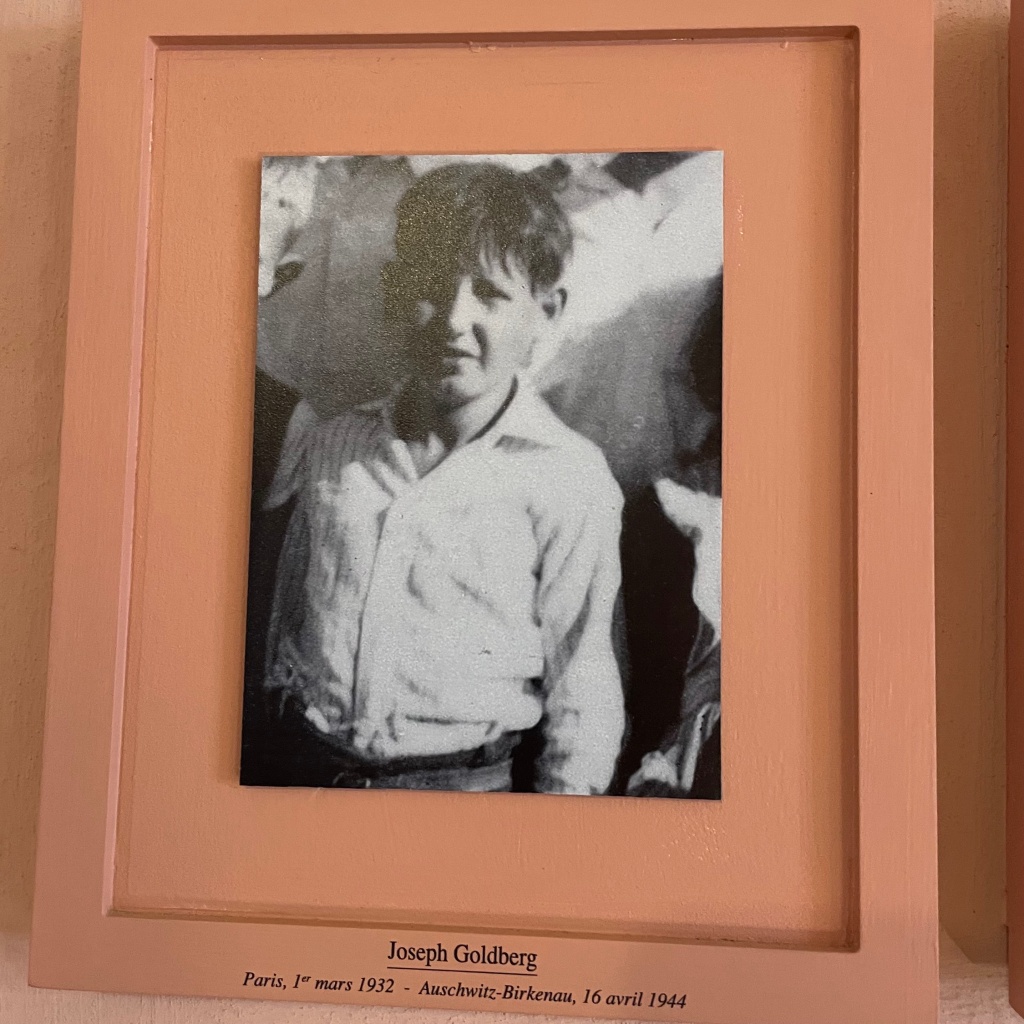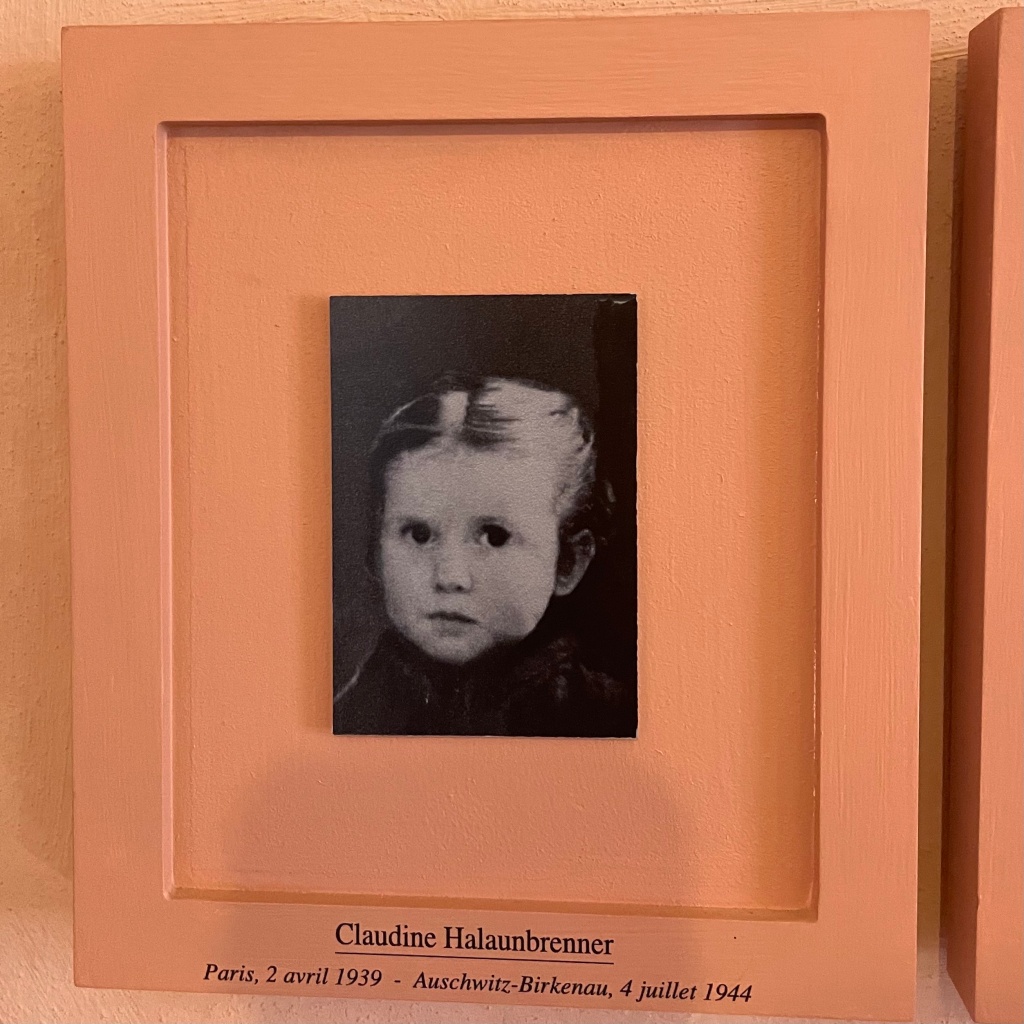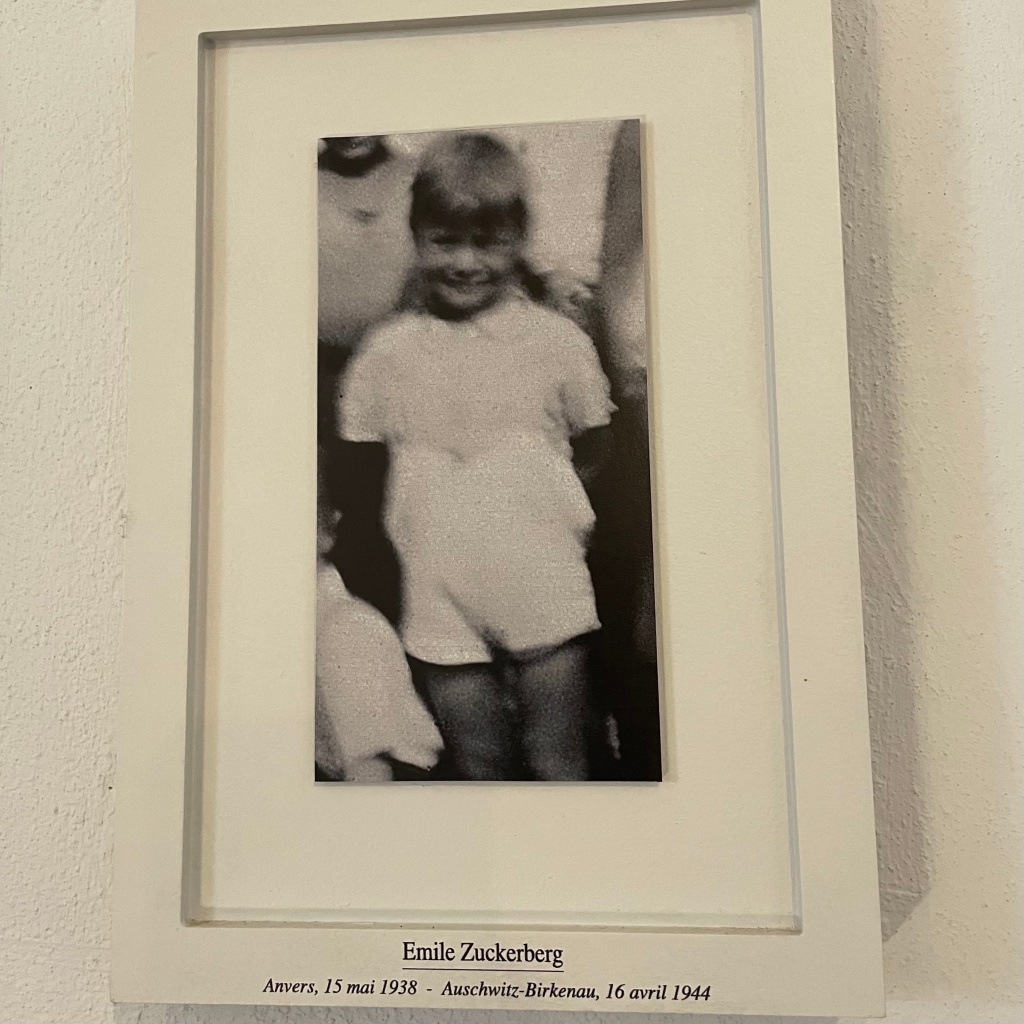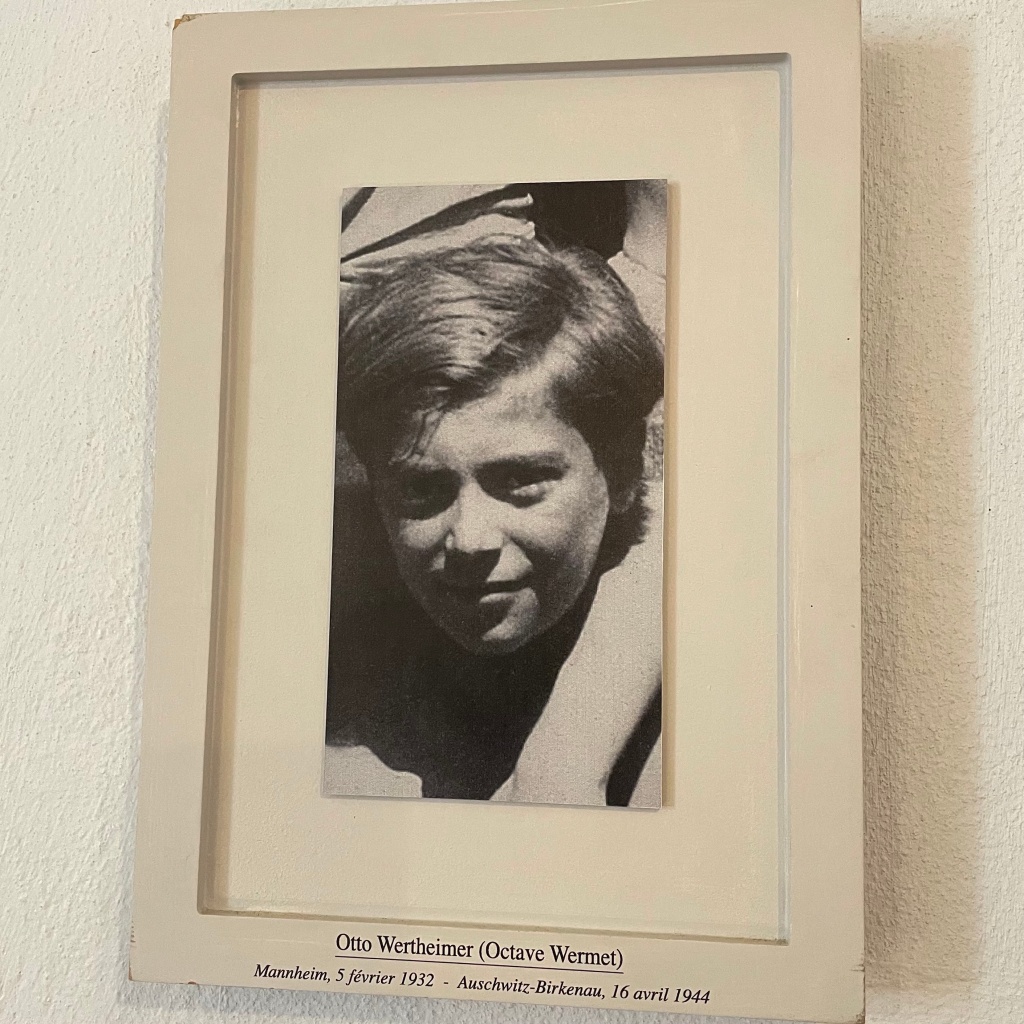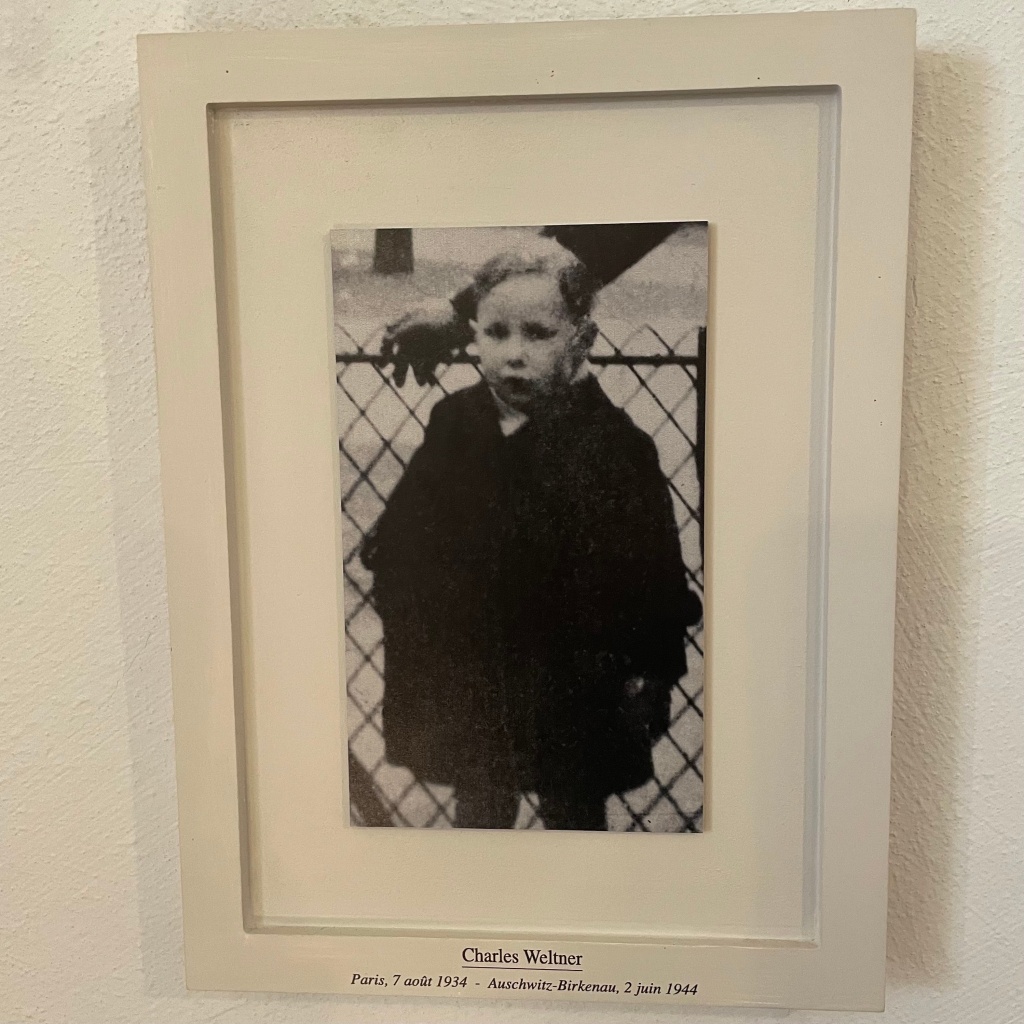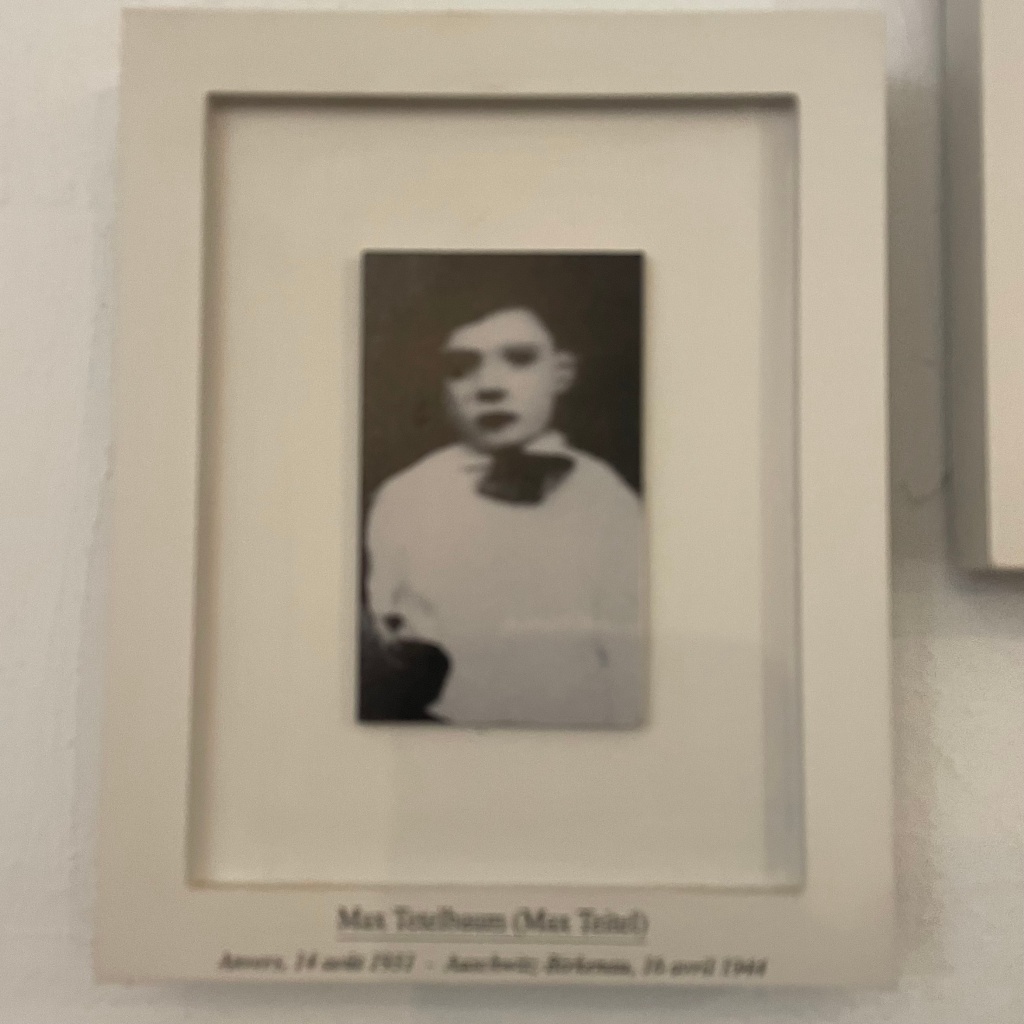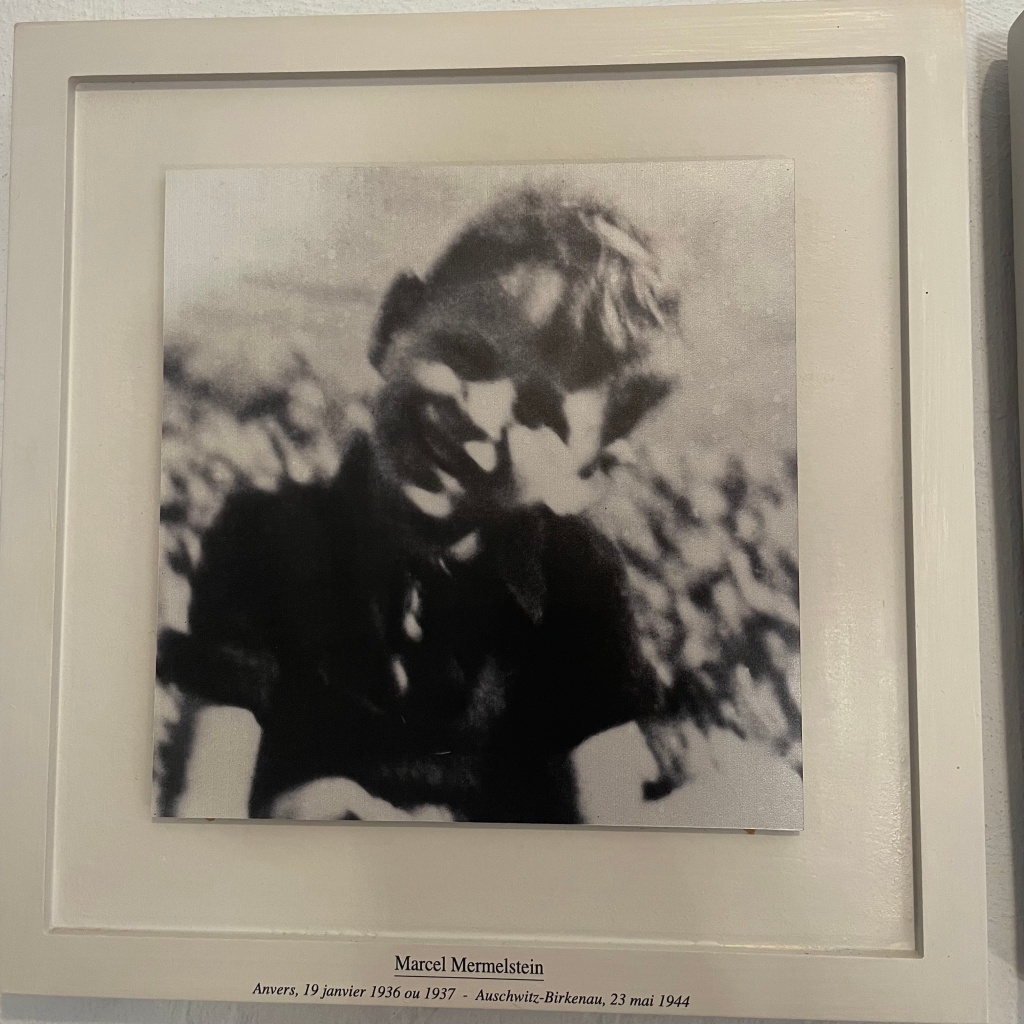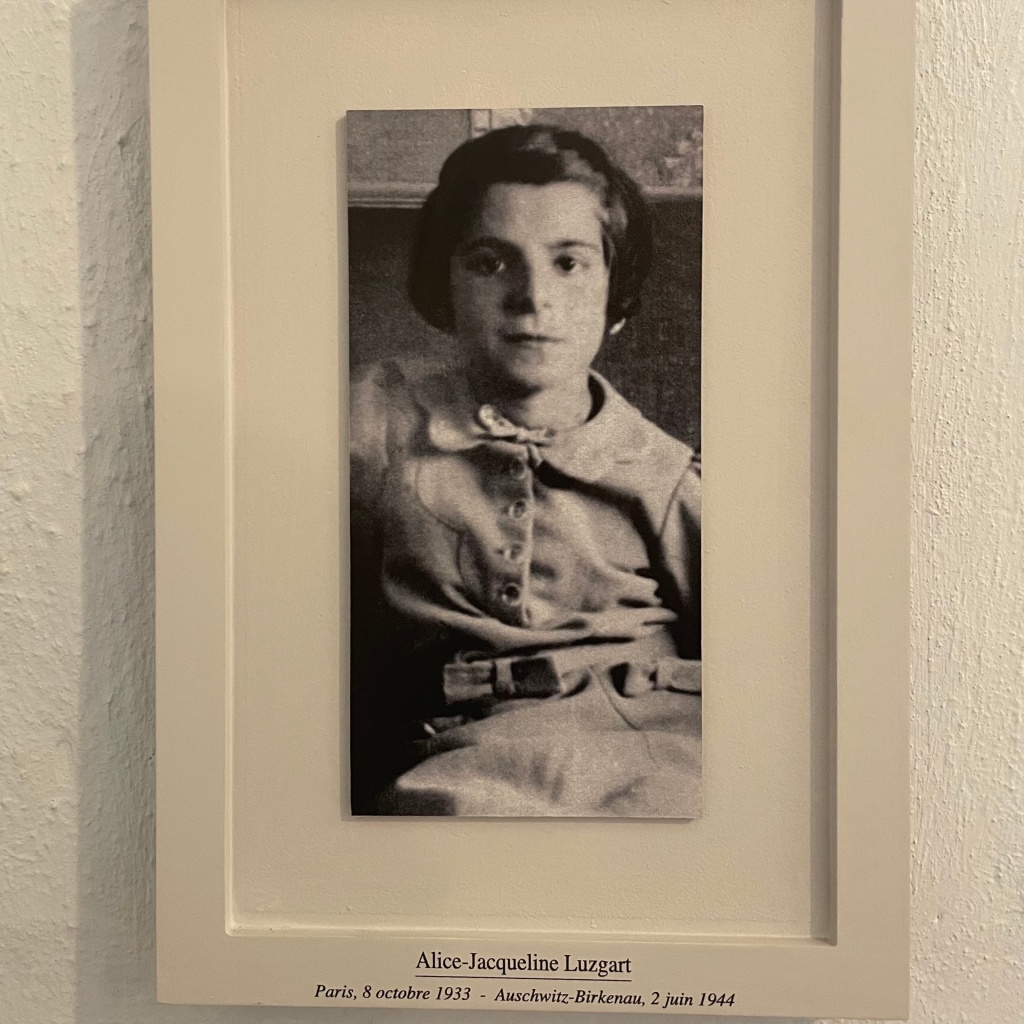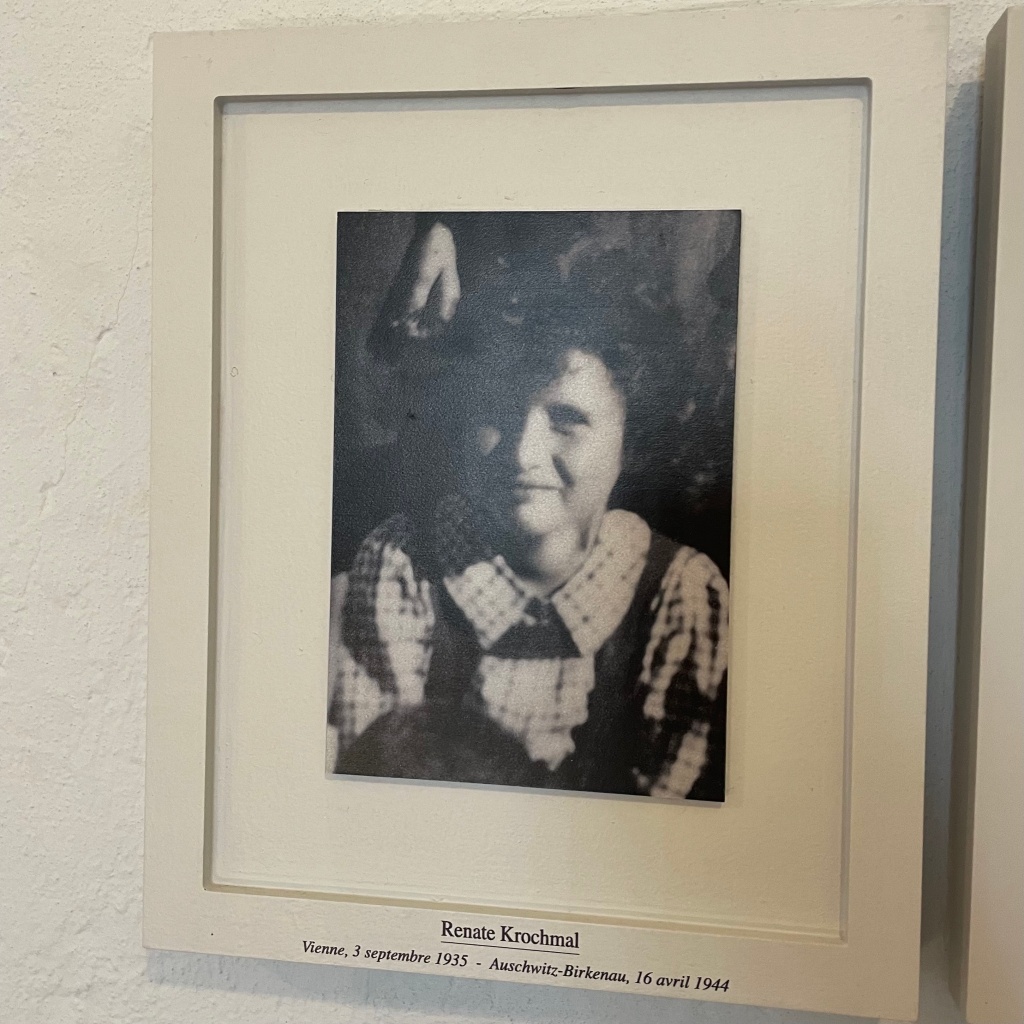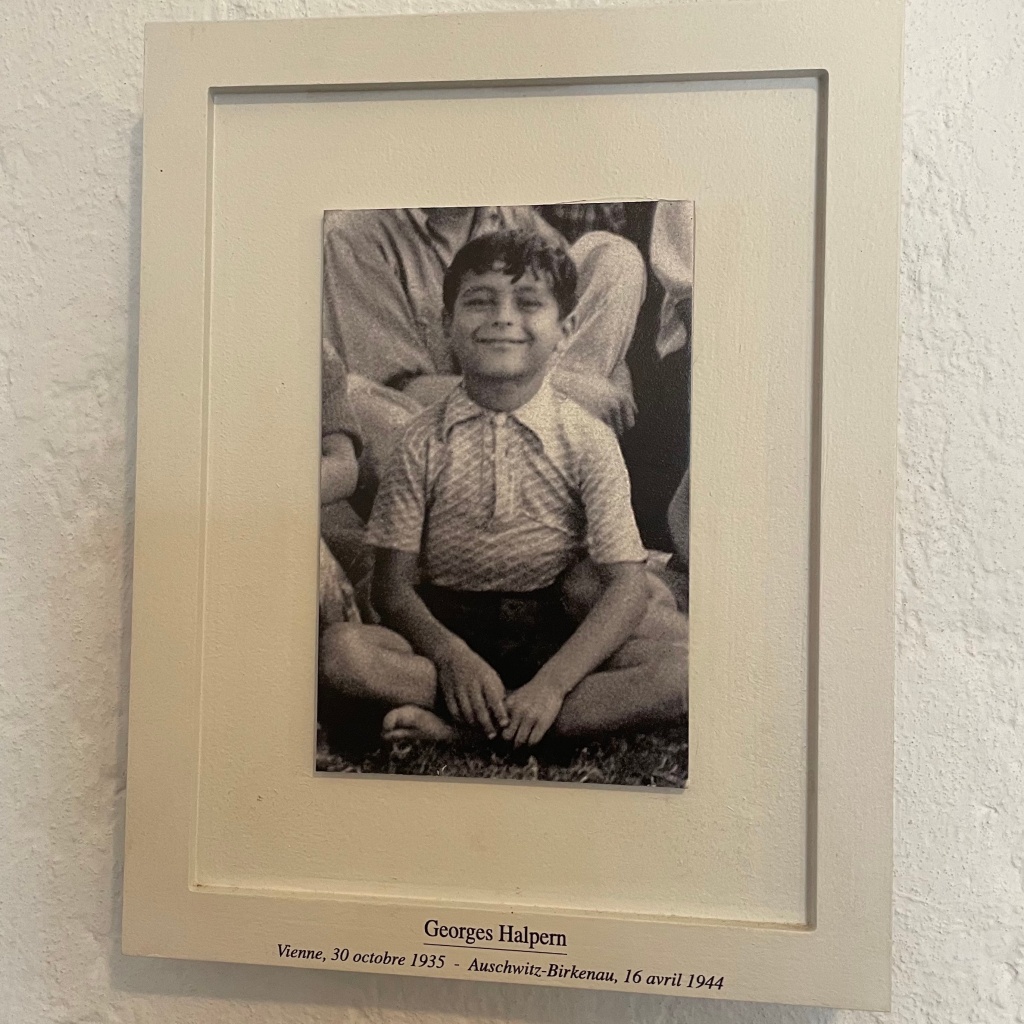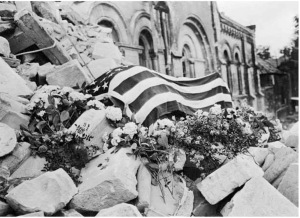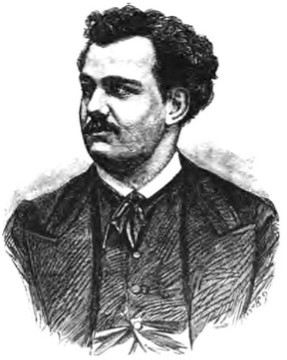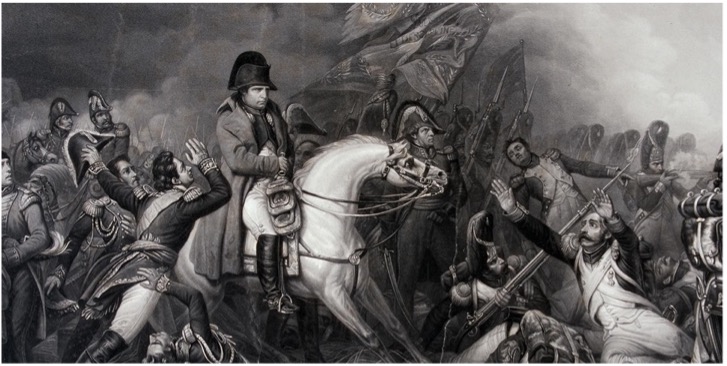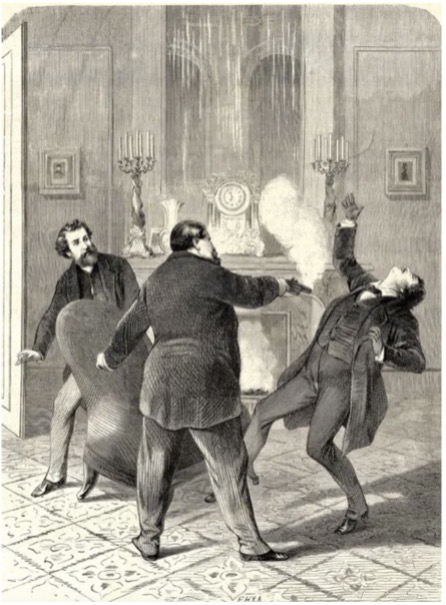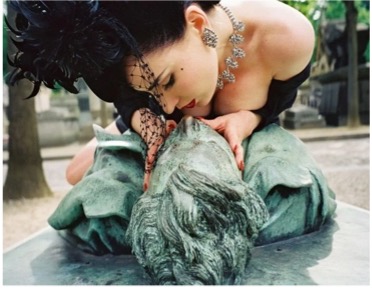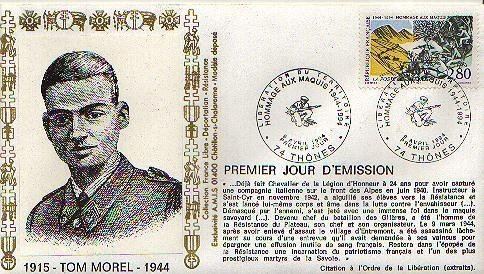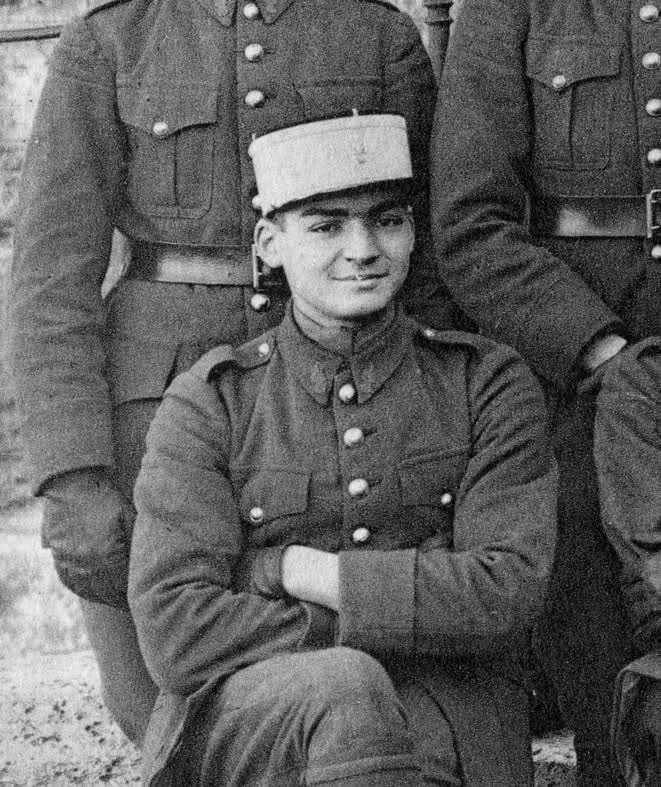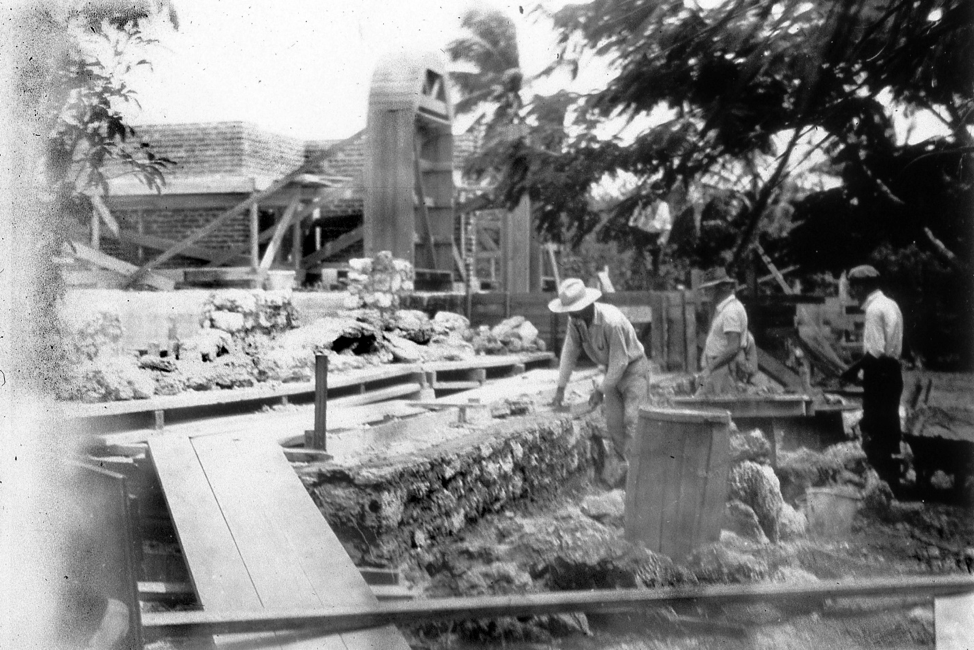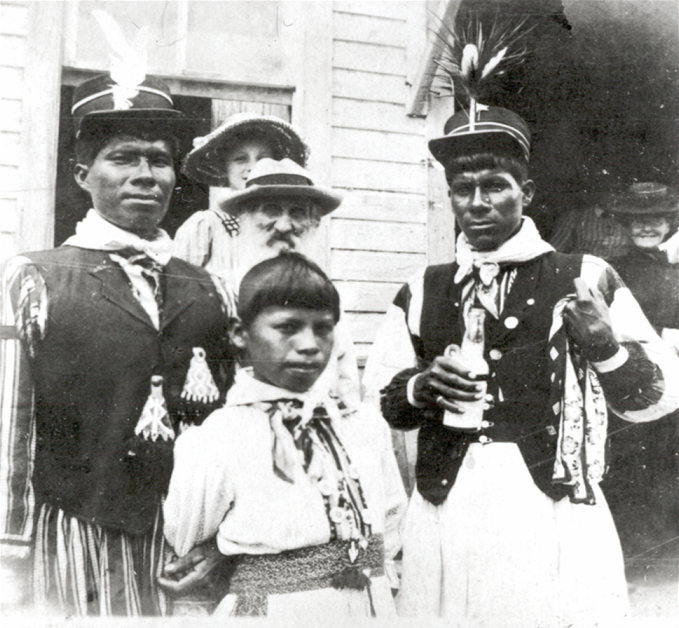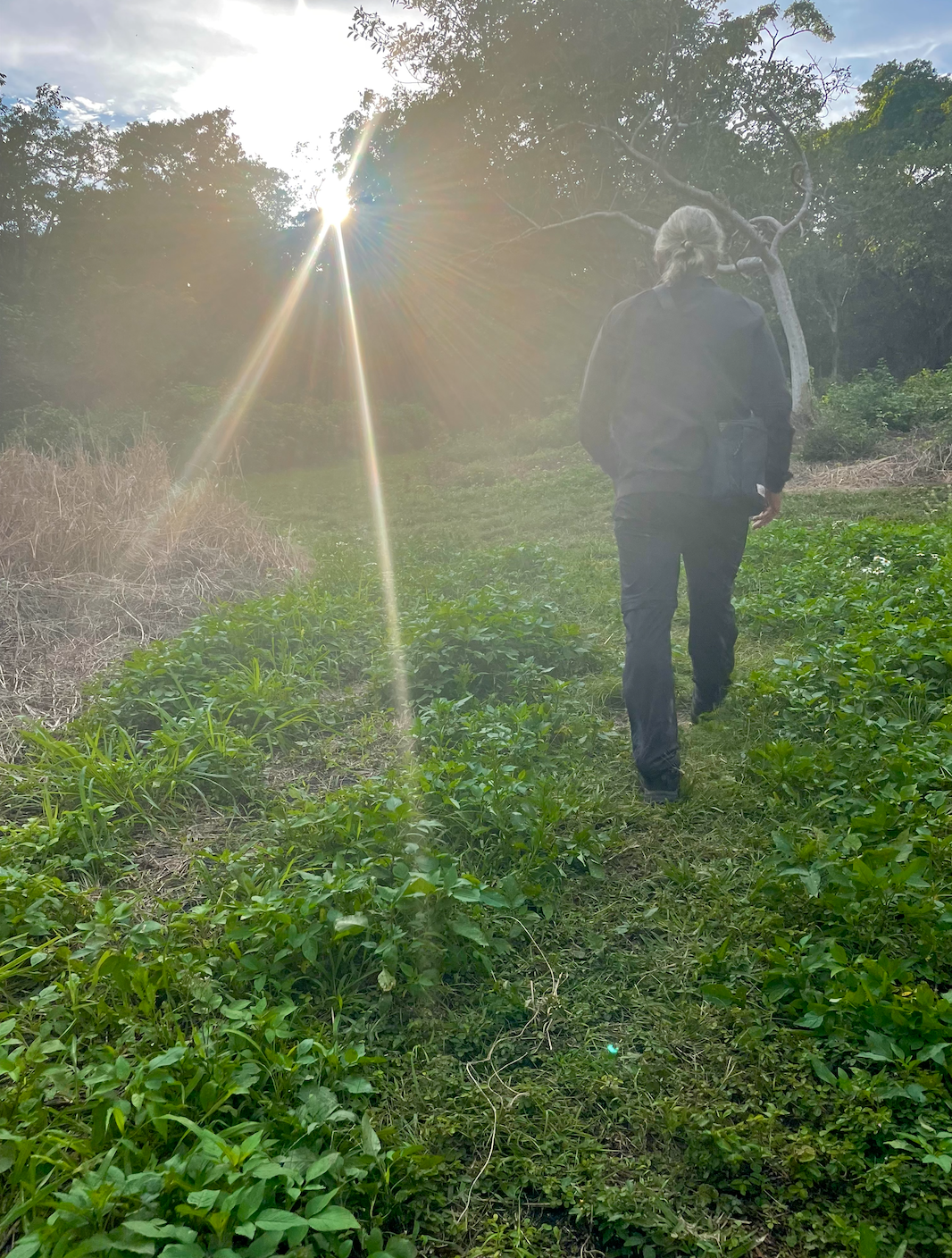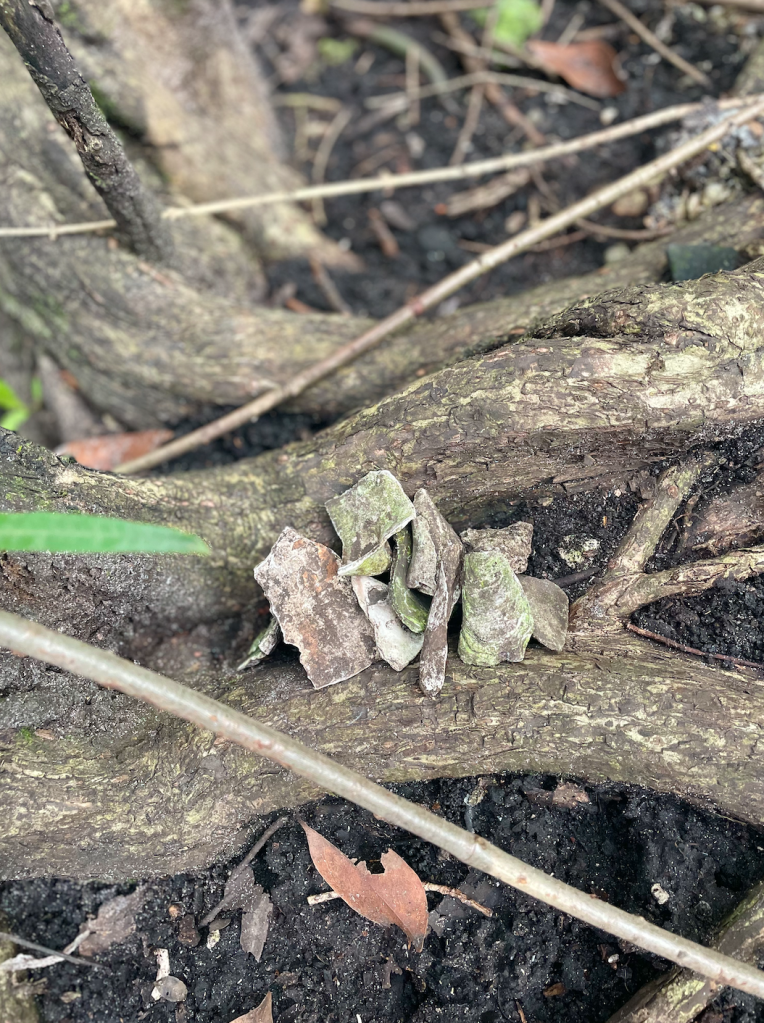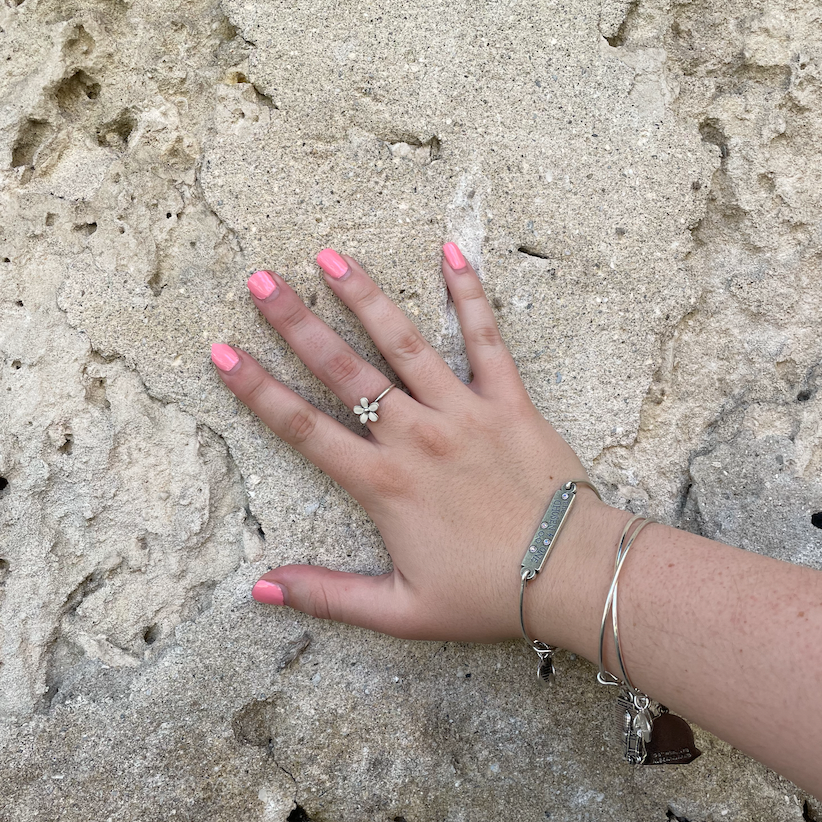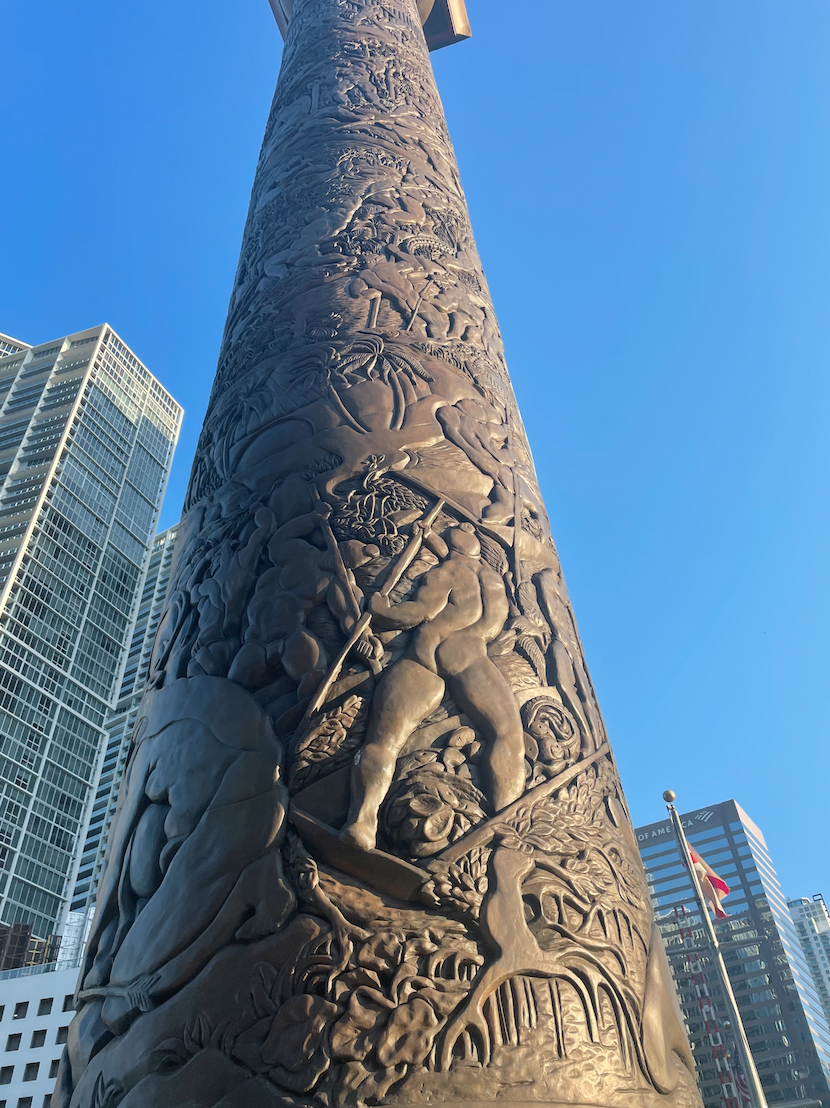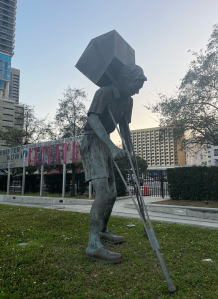PARIS OVER UNDER
“A Foreigner’s Journey in Paris,” by Karina Gonzalez of FIU throughout July 2022
It is always easier to say that you can imagine yourself living in another city or another country, even if the native tongue in said location is foreign to you. Maybe you convince yourself that you could adjust, that you could learn.
Or maybe, you tell yourself that you could never see yourself in a new setting. Leaving your comfort zone? That seems a bit too intimidating.

But what we, as individuals, tend to overlook, is that we will never know if we do not try. Human beings have been known to be explores and voyagers from the beginning of time. Before modern day technology, humans would migrant around the Earth following landmarks, nature, and marked paths by migrants who journeyed before them. Today, we have an easier way of doing so: GPS, World Wide Web, review rating applications, and so much more.
Over the last 31 days, I have been exploring France and her beautiful locations. I have specifically taken an interest in exploring Paris, France. One of the grand accessibilities that the French government offers its residents and tourists, is a convenient way of public transport through metro lines, trolleys, and buses. Not only is this a financial benefactor for the average resident or tourist, but it also takes an “eco” approach in reducing pollution. More forms of public transportation, essentially decreases the necessity of private transportation (meaning less automobiles and more trains that can hold larger amounts of people). Thus, possibly reducing carbon emissions released into the atmosphere by idle automobiles.
In any foreign location one visits, it is very simple to visit the main attractions and go about one’s day. But how will you meet the real city or country if you never explore the places that are not advertised?
That was the goal when facing the enormous city of Paris- to meet more of city than just what meets the popular eyes.
With that in mind, my group and I selected Metro Line 12 to explore throughout our study abroad program. Not only was this metro line full of different stops over Paris, with different social and economic statuses, but it was also filled with different cultures that we had not been exposed to.
Without further ado, I present to you, “A Foreigner’s Journey in Paris.”
Stop One: Abbesses [M12-stop 9]
A Party in Paris, Without the Cost of Paris
Whether you are admire analyzing art or you simply enjoy looking at it, have you ever wondered where art comes from? The truth is art has been around since the earliest civilization. It has taken various forms, yes, but nonetheless, the creation of art has always existed. But what has also been around since the earliest civilization, has been forms of payment: whether it be through trade or through something of monetary value.
And Paris was no exception to this.
As an aspiring artist in the 18th -19th century, it was difficult to gain profit or recognition and live a comfortable socio-economic life. It was even more difficult having been part of the minority class. But artists had a way of making their socio-economic standards work while they pursued their goals.

By the 19th century, Montmartre still had not been established within the city limits of Paris. Thus, making it an exception to the alcohol tax imposed on the wine. Over time, Montmartre became the birthplace of modern painting, housing various artists such as: Picasso, Vincent Van Gogh, Cortot, Manet, Monet, Renoir, Degas, Sisley, Cezanne, Gauguin Lautrec, and many others.
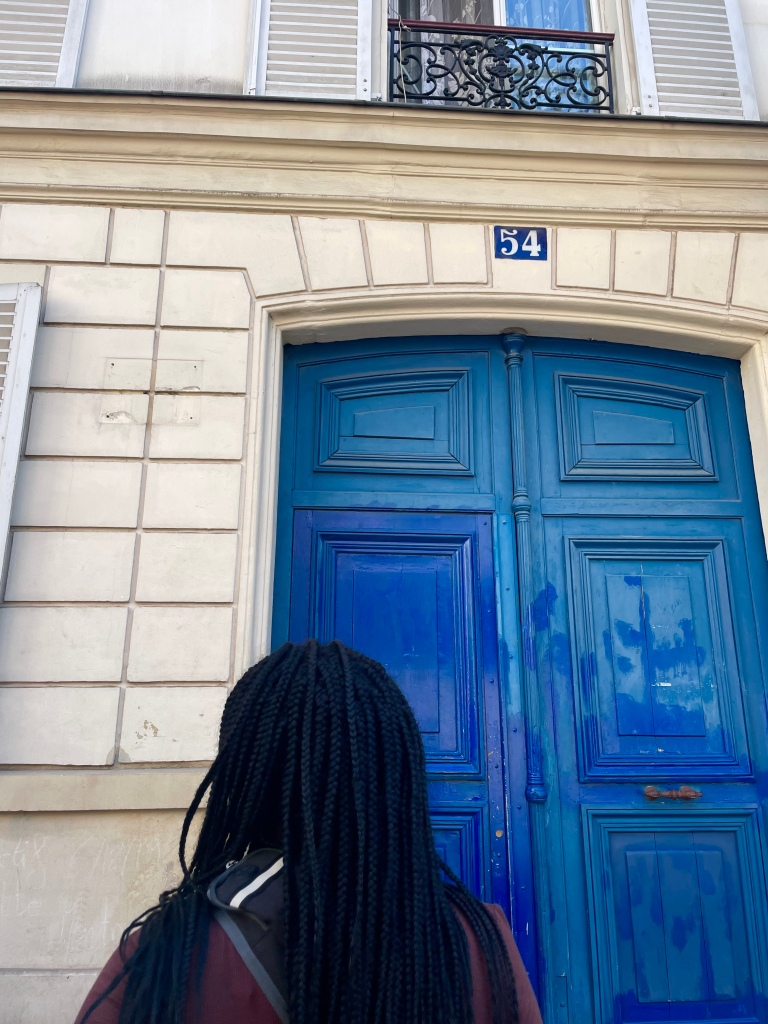
But this location was not just an area for artists to go to because of the lighting and inexpensive rent, this was also the place to party! Because of the city limits, Montmartre became the home of the carbonate for the people of Paris. Various types of artists would play, sing, and enjoy life freely.
Montmartre became the birthplace for modern day culture we know today.
To reach the second most visited location in now Paris, one would have to travel down Metro Line 12 all the way until the infamous Abbesses stops. While today it serves as the station located in one of the liveliest areas of Paris, it was formally known as woman’s abbey placed under the protection of King Louis VI after uprisings with the papacy formed. In order to calm tensions, King Louis VI claims various windmills, vineyards, and a small church that he dedicates to the “martyr of Saint-Dennis.”As a result, the “Abbey of the Ladies of Montmartre” became one of the most significant institutions within the 13th century.
Stop Two: Pigalle [M12-stop 10]
The Scandalous and Sensual District of Paris
One of the biggest culture shocks to face is that of sex. Various cultures and religion’s view sex through separate lenses; some praising its freedom, and some worshipping its intimacy. Either way, each present the topic of sex as a humanely action conducted for various reasons.
While Paris is known for its open sexuality, dating back before the Renaissance era, there is a district that became designated as the sex district of Paris: Pigalle.
Starting a bit before the entrance of Pigalle, but commonly associated with it, is the infamous Moulin Rouge. The Moulin Rouge cabaret is located at the bottom foot of the Montmartre hills and has been standing since October 1889. Both Joseph Oller and Charles Zidler placed their efforts in creating a location dedicated to entertainment for a diverse audience.
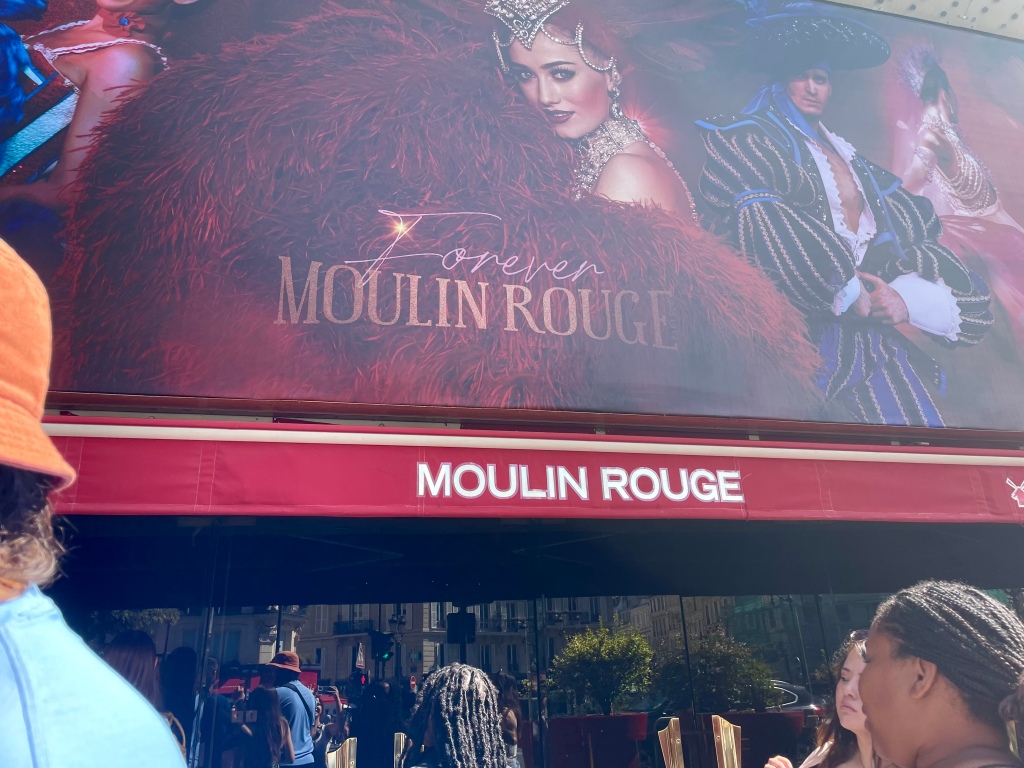
Today the Moulin Rouge is known for its divine entertainment of topless dancers and fine dining, but it had gone through its fair transitions throughout history, starting as a carbonate, transitioning to a theater, a dancing club, then back to the restoration of Moulin Rouge carbonate. Beginning as a prestigious carbonate for a select society, the Moulin Rouge was a place to admire the dancers and dance yourself. There was no shaming in the open sexuality.
One of the most famous dances that was home to the Moulin Rouge was the Cancan dance. Although the dance was not born at the Rogue, it definitely did earn a bit of its popularity there. Two of the most renowned dancers are La Goulue, a performer known to have given Moulin Rouge its fame with her exotic dancing and expressions, and Nini Pattes en l’air, known to be the first to teach and dance Cancan professionally.
But if you keep walking down the street of the Moulin Rouge, you will find yourself in a very interesting area.
Unlike other parts of Paris, known for the lights or art, Pigalle, also known as Pig Alley, is known for its open sexuality. Around the entire district, Paris’s red-light district is filled with sex shops, adult theaters, and history.
One of the interesting aspects about Pigalle, known for its raunchy behavior during the Second World War when Allied soldiers would “blow off steam” in the district, is how open it is to the topic of sex. Over history there has been constant conflicts between ideologies and religion, often revolving around the topic of sex.
However, living in the 21st century, the idea of there being a district that embraces sexuality rather than shaming it, seems to be empowering as a human being- specifically women, who have often been judged on our “virtue” and “innocence.” Additionally, Pigalle district not only embraces the sexuality of men and women, but it also is home to some historic figure performers, such as Josephine Baker, who not only expressed the beauty of Black-American culture, but also served as one of the most important figures in the French Resistance.
Stop Three: Madeleine [M12-stop 15]
From Rich to Richer Paris
Growing up near the Design District of Miami, FL, art and fashion have never been too far from me; walking down Madeleine felt like an extension of home.
The Madeleine district in Paris is the Rodeo Drive of Beverly Hills, California or Coral Gables of Miami, Florida. With over 20 designer stores, including Prada, Gucci, Versace, Rolex, etc., each has its own interior design to welcome its customers. Although originally a rural district, Madeleine is now commonly known for its luxurious street located on Rue du Faubourg Saint-Honoré.
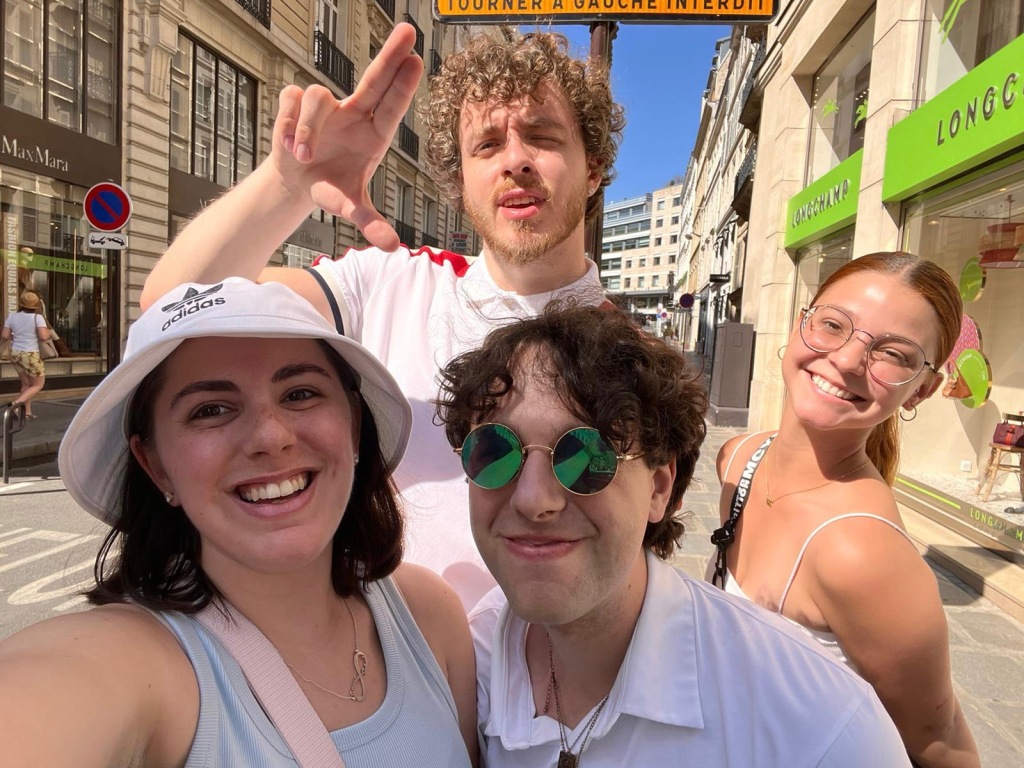
Although walking through and down the streets of Madeleine were impressive, including a run-in with celebrity Jack Harlow, I cannot say that I felt very moved by the materialistic world of Paris around me.
From store tour guides to champagne offerings while you shop, the stores in Madeleine are designed to allow consumers to feel the upmost important while they spend. But I cannot help but what wonder if the attention to detail given to consumers should be praised or reprised?
On one hand, it is admirable that consumers spending large amounts of money on clothing or accessories be treated a certain type of way. But on the other, it feels almost vain to know that it requires an individual to have the financial needs to be treated that certain way.
Walking into the store Gucci felt nerve wrecking- not only because of the price tag on the clothing, but also because of the stigma around who should be in the store. As a university student dressed in casual attire, it felt almost judgmental to walk into a prestigious store with a carpet flooring and workers dressed in suits and ties. Although the service was without prejudice, there was no doubt that more attention would have been given to an individual who looked like they had more wealth.
In a way, my experience made me question individuals such as Vivian Ward, from Pretty Woman, who were treated with prejudice and judgement for their physical appearance- though they had money. It also made me take into account the many social experiments that have occurred of individuals who look a certain type of way when walking into the high-end stores and are treated differently.
To what extreme are were no longer judged on our wealth’s physicality rather than just our character?
Stop Four: Concorde [M12-stop 16]
Crossing Into the Small Palace
By far, one of my most favorite locations to have stumbled on, has been Le Petit Palais, also known as the Small Palace. Originally designed for the 1900 Universal Exhibition, Le Petit Palais has continued to stand as a museum for decorative murals and sculptures created between 1903-1925, since the year 1902.
The Palais, in itself, was breathtaking. Consumed by a “trapezium shape,” the architecture of the building takes on a mix of both modern and traditional architecture. Similar to some infamous government buildings back in the States, Le Petit Palais has various similarities in its structure that resemble those of the White House and Congress; such as the four wings that surround the construction itself.
While the architecture of Le Petit Palais is beautiful, that is not what called my full attention.

As an admirer of art, I always tend to try to analyze what is in front of me.
What is the artist trying to show? Why are they showing it? How is their message being portrayed? These are all questions I ask myself to try to find the deeper meaning behind just a pretty canvas or statue.
I was captivated almost instantly walking through the Palais. Upon entering to the left, a viewer, such as myself, would find themself entranced in the new sculpture gallery added in 2018. Similar to that of the Louvre, Le Petit Palais inagurates marbled sculptures from the 19th century. While there are Roman statues, personifying the beauty of the feminine Gods- many of the statues reflect the “exuberance and proliferation of styles in the late 19th century.“
The statues, on their own, embarked a new feeling of inspiration in me. Not only were there statues admiring the true beauty of women, not Goddesses, but there were sculptures admiring the true work of the arts.
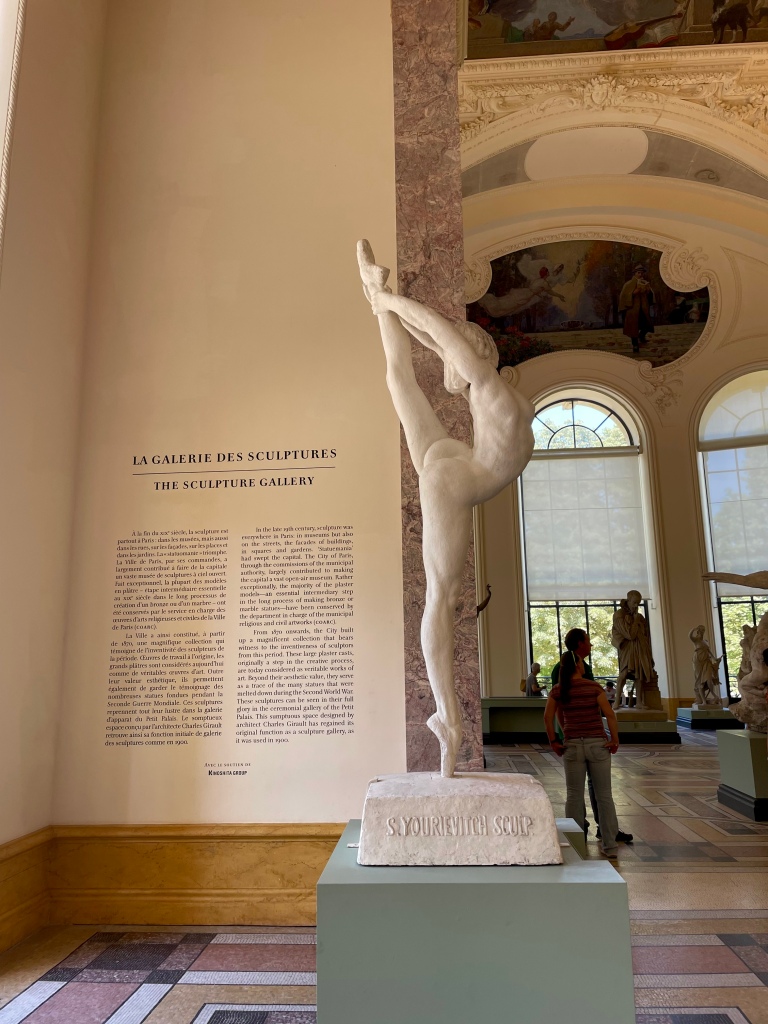
One of the most significant sculptures that I found myself drawn to was “La Danseuse Sacha-Lyo” (The dancer Sacha-Lyo) created by Serge Youriévitch in 1933. The ballerina sculpture is one of a few sister sculpture, who’s name take on its portrayer. I found myself entranced by the amount of detail put into the dancers body, muscles, bones. One of the greatest things mankind can do is acknowledge the agony and pain put into the arts; although the results are beautiful, the process is painful.
The 33 sculptures added to the new sculpture gallery was not the only form of art that captivated me. Continuing into the next room of collections, was a series of feminine paintings embracing the sexuality of women. There was no shame, there was no humility- just the simple pleasures and beauty of women.
One specific painting that was embarked my mind was Le Sommeil, created by the artist Gustave Courbet. Courbet followed realism within his painting style, however, he “incorporated the drama and excitement of Romanticism in portrayals of everyday life of rural people.” He captured the raw human emotion of women enjoying the pleasures of life without shaming them for their open sexuality.

By far, I can say that Le Petit Palais not only opened my eyes in more to the art work, but left a mark in my heart when it came to the embodiment and admiration of women through art.
Stop Five: Assemblee Nationale [M12-stop 17]
Politics in Paris
Every strong nation needs a strong government; every strong government needs its strong people. This has been the mentality I have had since I began pursuing my career in Political Science. I have always been one passionate to defend and advocate for others who cannot advocate enough for themselves, whether it be on a personal, academic, or political level.
Amongst traveling through the different parts of Paris, I found myself visiting a site that, too, reminded me once again why I chose to my academic and future career path. It was inspiring to know that even over 4,000 miles away from home, a foreign country such as France, can continue to inspire me to pursue my passions.
The Assemblée Nationale located in Paris, France is seen as the “Congress” of the United States; but this historical building is also a significant “pinnacle of French institutional life and the effective demonstration of democracy at work.” Home to the French Parliament over the last two centuries, the Assemblée became home to the the members of the third estate who declared themselves to be the “National Assembly.”
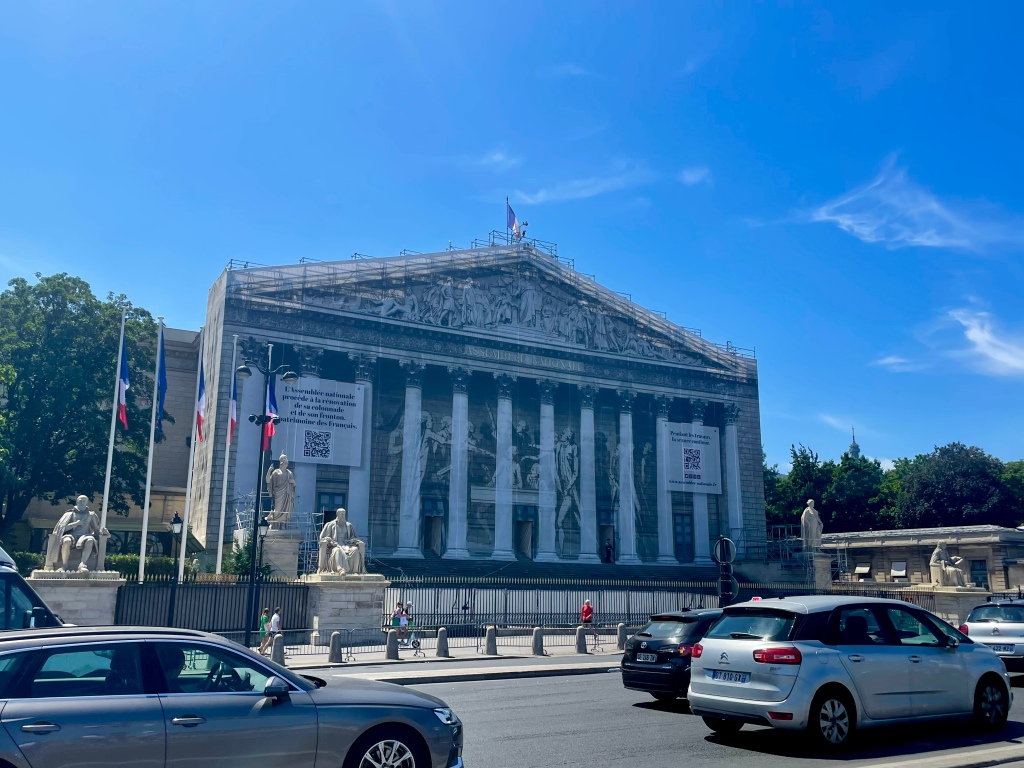
After the events of 1789, the third estate, which were the common people, framed a constitution in which the monarchy was abolished. Therefore, the power of taxation were no longer left to the king. Since the time of 1789, the French Parliament has remained standing through the ups and downs of the French pendulum.
Fortifications around the Assemblée protect the building from any intrusions. While construction was occurring during my time of visit, the outside of the French Parliament’s home remains open to the public’s view. With a surrounding of cartoons that explain the history the Assemblée Nationale has provided for the people of France; this building remains one of the greatest creations embellishing the strong government of France.
Stop Six: Solferino [M12-stop 18]
The Paris Museum That Left an Impression
“Art is not what you see, but what you make others see.”
Edgar Degas
Whether you are a critic of art or simply an admirer, there is no greater feeling than seeing a work of art and resonating with it. Art, in itself, is left to the viewer/interpreter. It matters not if you are educated, or if you have a higher social status- all that matters is that you are able to interpret what an artist has created. However, this can be tricky, for what I interpret in one way, you could interpret in another.
Traveling through Paris, France, there has been one significant museum whose history not only left an impression on me, but its creators also left another impression. The museum, famously known as Musée d’Orsay, is home to the impressionist artists, as early as 1818. Impressionists were challenging traditional classical art, at the time, by painting subjects that had no connection to either religion nor to a higher social class- but, instead, something that everyone could relate to.
This is why you often see famous paintings of Monet, that revolve around nature or seasons- admiring truly what is in front of us. A type of artwork that could be acknowledged and admired by the common person.
One of the most significant artworks that I bore witness to at Musée d’Orsay was the contrasting pieces of Le Déjeuner sur l’herbe by Monet and Le Déjeuner sur l’herbe by Manet. Across from each other, you can see the significant and distinctive details that the artists portrayed within their canvases. While Monet focuses on the nature of people acting right in society, hence the manner they are dressed and the manner in which they are interacting with each other; Manet, focuses on the true desire of people. Manet cares not for whether he will be held accountable to societies standards for painting absurdness; he painted, with a large hint of sexuality and the glory of human sexuality and interaction.

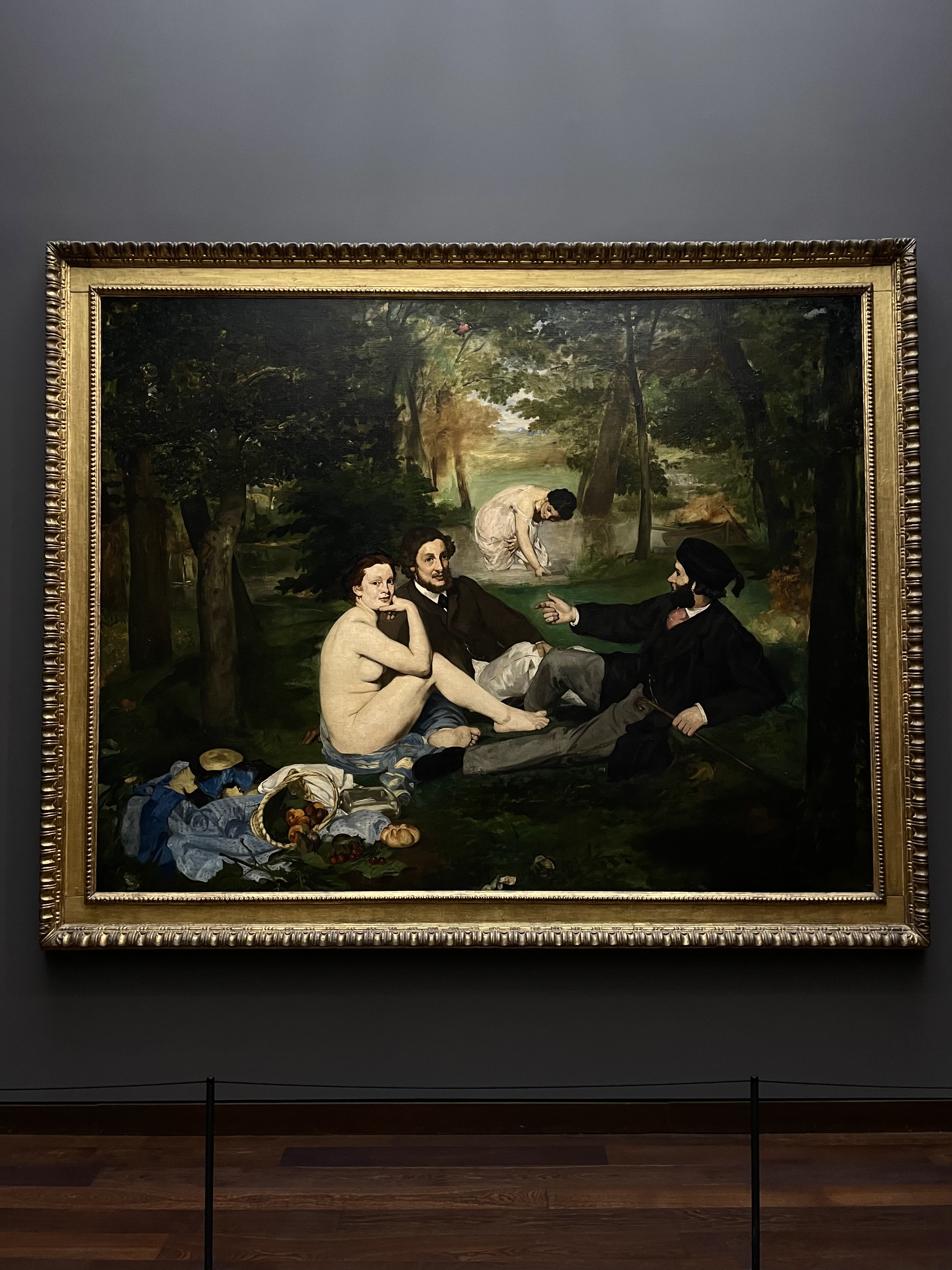
Monet and Manet were not the only artists that left an impression in my mind. In fact, there were over 10 artists, including Vincent Van Gogh and William Bouguereau that also left a mark. I believe that one of the reasons why I admire these artists so significantly, is because of how against society they were. It mattered not that they did not have money, nor if they were accepted into Royal Academy for the Arts- all that mattered was that they allowed the art they made to be interpreted by the public.


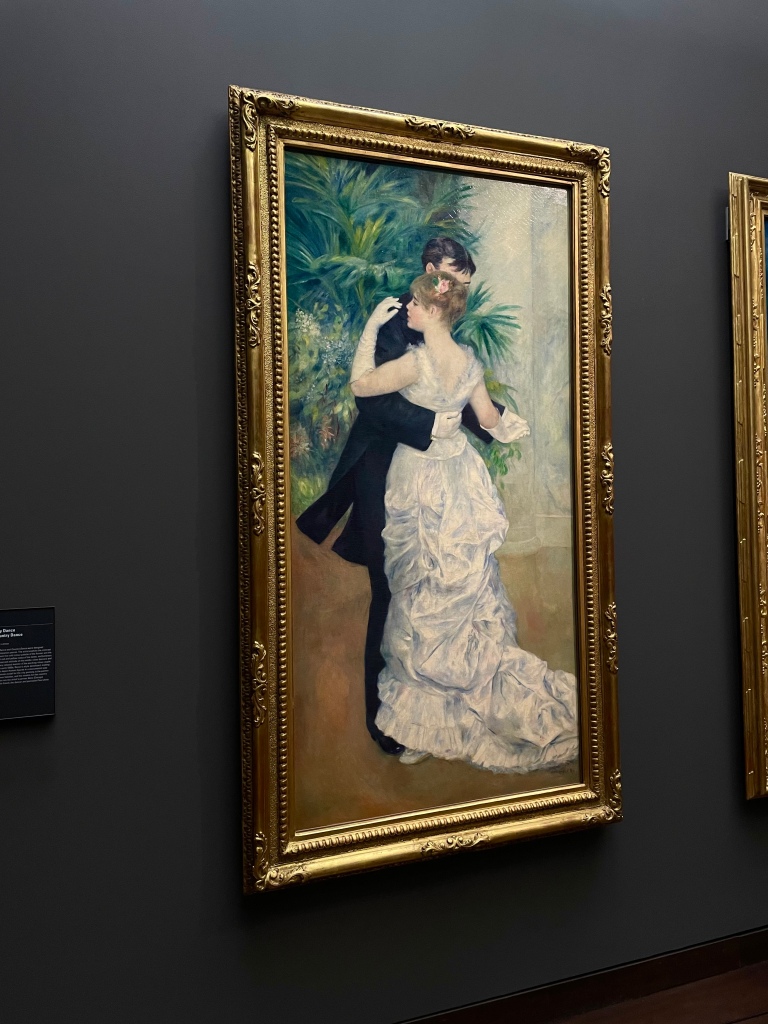


I wonder what I would do, as an artist myself. Would I go against society’s standards and create the art I think should be significant, or would I try to fit into society’s standards and create what the higher social class would interpret?
Stop Seven: Rennes [M12-stop 21]
Luxembourg’s Feminine Garden
From buildings to green spaces, Paris has shown me all her beauties. Another one of the largest culture shocks I bore witness to while traveling was the efficient incorporation of public green spaces. Unfortunately, Miami’s suburban area does not focus heavily on recreational parks or gardens- at least not in the way Paris does.
I find this a bit tragic, as one of the most beautiful aspects of traveling France has been not only seeing the beautiful green gardens, but also, seeing people interacting with one another in person not remote.
Throughout my travels of M12, I found myself gliding down the pebble walkway of the Jardin du Luxembourg. This 60-acre Jardin, created in 1611 by Catherine D’Medici, is known not only for its beauty, but also for its vast access of public amenities. Both locals and tourists can be found wandering around the gardens, visiting different focal points to sit, relax, and socialize.
However beautiful the gardens naturalistic aspect was, Jardin du Luxembourg does more than just captivate you with its greenery. The Gardens are known to embark on femininity and emphasize the beauty and strength of women. Within the Jardin there are about twenty statues of previous queens of France placed, along with an additional ten that empower women; including statues such as The Statue of Liberty, Monument to Delacroix, Stendhal, and more.
As a woman constantly facing the judgmental presence of the world and of one’s own government, it felt empowering knowing that there was a Jardin within Paris that honored women in a way. It feels as though women are often overlooked for their “lack” of contribution to society, in traditional times. When the reality is that if women were given the attention to acknowledge their efforts at the time, there would be no attention left to give the men.
Stop Eight: Notre Dame des Champs [M12-stop 22]
Café Culture Around the World
It was impressive, on its own, to visit Paris and get a taste of Parisian culture… but it was more impressive to taste culture worldwide while in Paris, France. A few steps outside of Notre Dame des Champs, is a little district known for its Café Culture. Not only does this area provide a vast majority of brasseries and restaurants, but it does so for other cuisine tastes besides that of Paris.
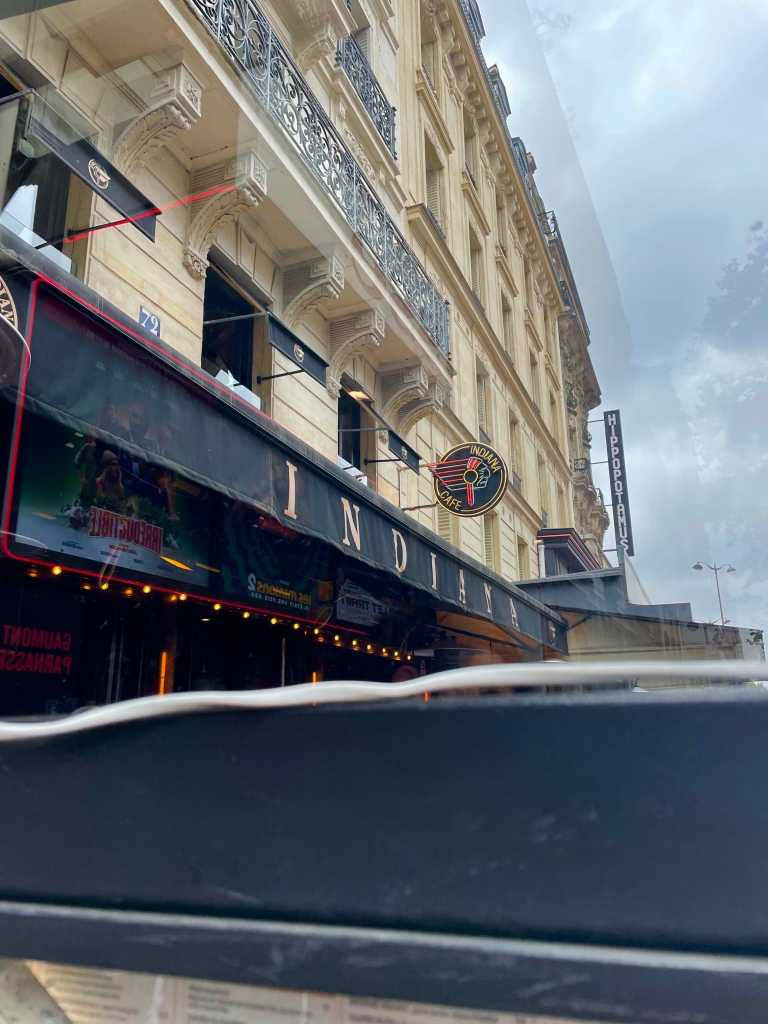
Throughout our journey, we stumbled upon the café culture district, where we were exposed to various drinks and foods from countries such as: AngleTerre, Autriche, Trappiste, Canada, Hollande, Japan, and many more. It was fascinating to see the variety of options available around the district, allowing Parisians and tourists to expand their own tastebuds.
While the true architecture of the district was not as modern as Montparnasse Bienvenüe, which resides only a few blocks away, they primary ideology of the district is what makes it so different from any of the other locations I had been to. To be able to travel to Paris and still be able to try cuisine from other sections of France and sections of the world- to me has no comparison.
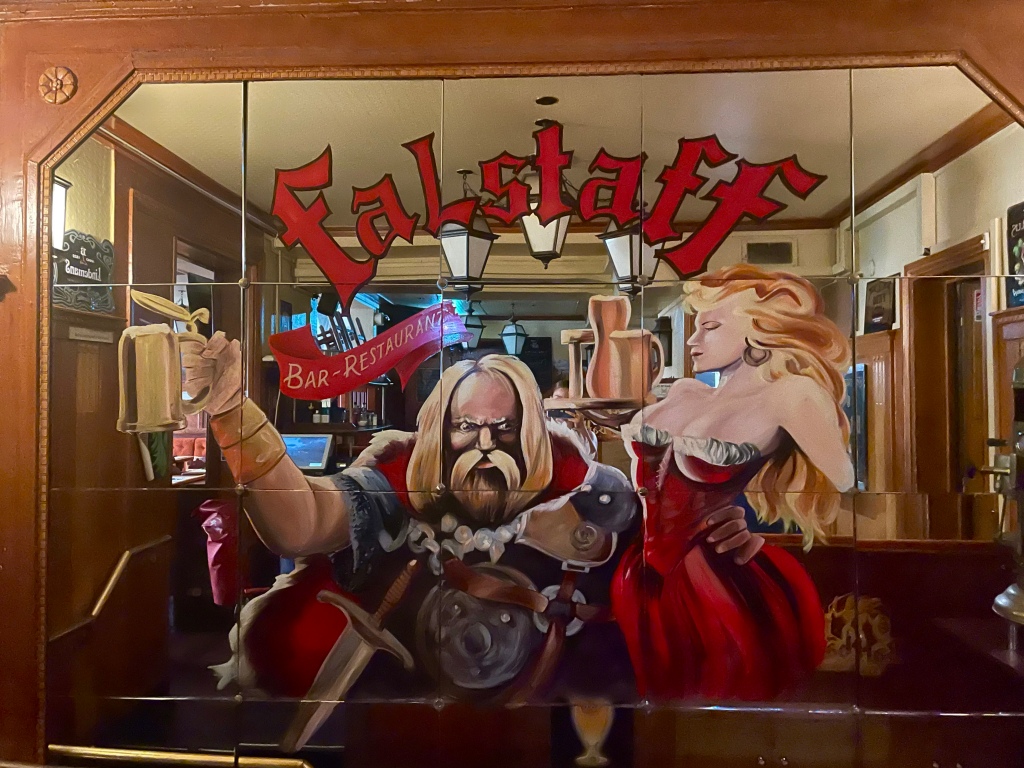
I came to Paris with the intention of learning about a new culture; that included trying its new food, drinks, traditions, and language. I believe that this district is an amazing steppingstone in attaining the perspective of “trying new things,” that I am aiming for.
Stop Nine: Montparnasse Bienvenüe [M12-stop 23]
Older Architecture meets Modern Paris
I always get astonished when I enter older looking towns, having always been surrounded by skyscrapers and newer glass buildings. However, throughout my time in Paris, France, I have adapted to the older architecture of the buildings around me- admiring its age and its history behind its blueprints.
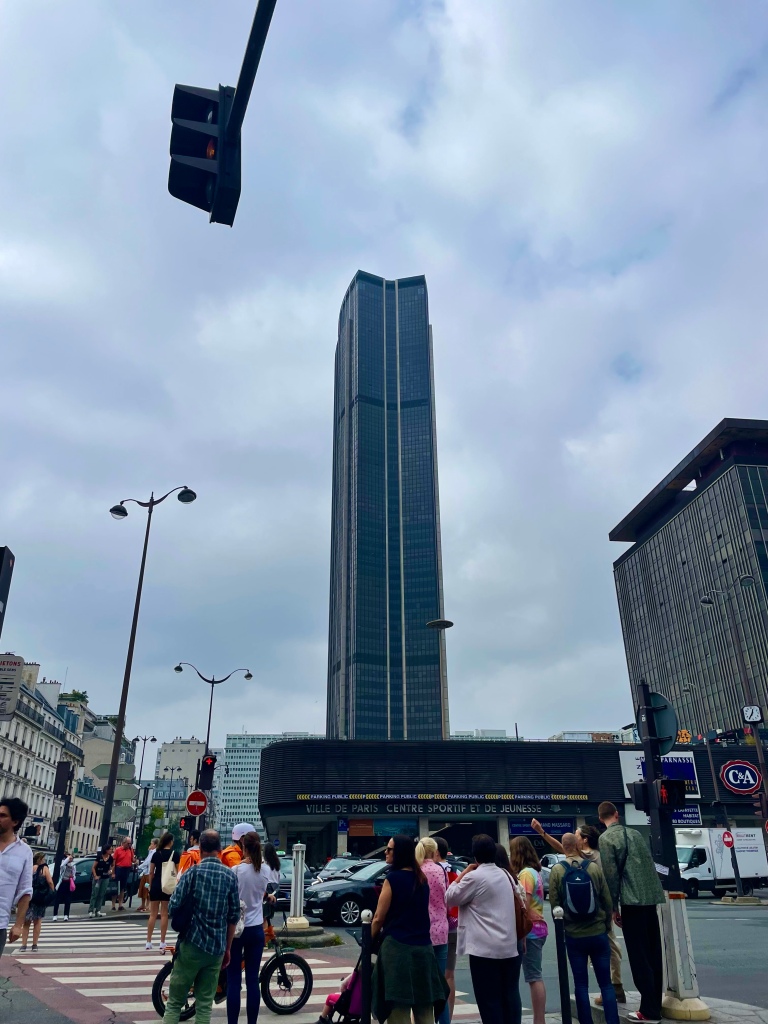
When wandering the metro stops of M12, we stumbled through Montparnasse Bienvenüe- passing through one of the most modern buildings around Paris named Montparnasse Tower. The Montparnasse Tower offers Paris a different look when it comes to its architecture. Serving as 210-metre glass office skyscraper, the building allows visitors and tourists to reach the top of the building and view Paris panoramically.
From its original construction date of 1969, the Tower, now referred to as Tour Montparnasse, served as the tallest skyscraper in France until 1973.

However, many Persians and admirers of the traditional French architecture could argue against the construction of such a modern skyscraper being built. Around the Tower, the district consists of older looking buildings, none of which aligning with the architecture of Montparnasse.
While it was interesting to see an odd-ball building standing its ground since the early 1970’s, I wondered how the rest of France would have been today- had it continued this type of architecture. Does modern time call for modern architecture, or should we continue the construction of older styles?
Throughout my travels in Paris, I have taken into account that much of its architecture continues to follow that of olden times. As explained by Professor Bailly of Florida International University, although architectures have attempted to add modern day skyscrapers, Persians are more against such advantageous. This was an interesting intake to have in a foreign country, seeing as the majority of buildings that surround my home city are, in fact, modern day skyscrapers.
Stop Ten: Port de Versailles [M12-stop 29]
Japan in Paris

From one metro to another, I immersed into a new country. Not literally, but virtually. COVID-19 has opened the virtual door to many new adventures for individuals, and Paris has been one of its finest customers.
Port de Versailles Expo Park – Fever Up // CC Karina Gonzalez
When exploring the Expo Park, Port de Versailles, I found myself traveling through different cultures and interest groups. From a dinosaur exhibit to an urban garden, to then an immersive Japanese exhibit, Paris offered a new variety of openings for individuals.

One of the most fascinating experiences I had while exploring the park was my travel to Japan. The €17 ticket took us through different parts of Japan, explaining not only its geographical beauty, but also its culture. The immersive experience began with the exploration of the Okinawa waters, viewing the coral reefs and marine animals taking residence within the sea. The projections then switched to the mountains of Hokkaido Island, allowing viewers to experience the sight of snow throughout the island.

As beautiful as the geographical projections were, however, one of the most beautiful moments was the collaboration of Japanese locals giving their testimony of their daily input on their culture. From the laboring of samurais to the creation of tea, the Japanese locals each told their story in how they have followed their ancestor’s way in continuing their own legacy. While one would assume that only older individuals would have the experience and maturity to comment on their culture, even the young had something to add onto.
One of the youngest testimonies given was of a young girl, around the age of 10, who practiced Karate- enduring the practice of Japan’s Kata. The prestigious discipline needed to attain a black belt, that this young girl is able to obtain, left me speechless.
Traveling to Japan virtually while in Paris, made me not only admire Japanese culture even more, but it also made me view Paris differently. Not only did Paris open its arms to the virtual world, but it also expanded in allowing different ethnicities to learn and become aware of a different culture that exists in the world.
My View

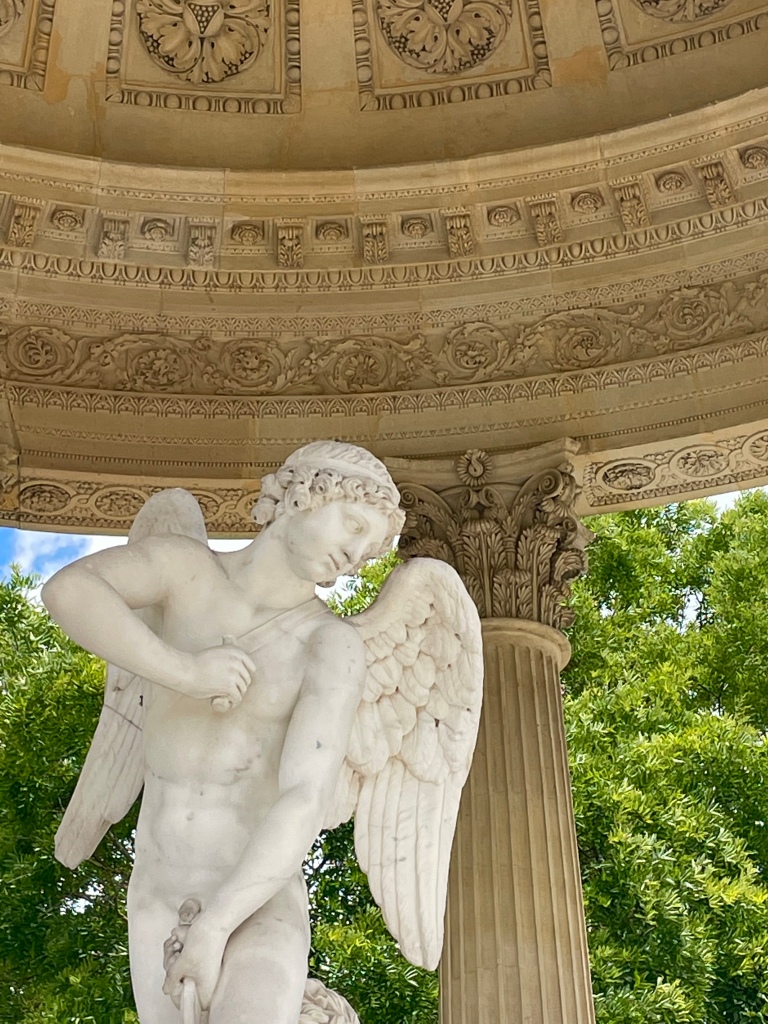

Personal views of France // CC Karina Gonzalez
In complete honesty, Paris has changed the way I view certain aspects of the world. Being from such a cultivated area, I always believed that there would not be any other location that would compare to the melting pot of Miami, FL. However, I could not have been more wrong.



Personal views of France // CC Karina Gonzalez
Throughout my journey in France, I have learned about various religions, cultures, cuisines, art, music, and so many other creations. The exploration taken throughout Line 12 opened my own eyes, as well. I was exploring, with two other students, a part of Paris that I had never even heard about it- and I could not have been happier with what I was exposed to.



Personal views of France // CC Karina Gonzalez
As the daughter of two immigrant parents, traveling Paris, France has truly made me appreciate not just what my parents had to overcome, but what thousands of immigrants overcome on the daily. Imagine being in a country where you do not speak the native tongue, nor have you ever used their common form of transportation. The intimidation that confronts you is not kind.
There are feelings of joy, feelings of frustration, and then there is confusion. Various times throughout my exploration, I found myself pondering over how my parents and other immigrants may have felt when they crossed paths in a foreign country. Did they move past the discomfort of being a stranger in a city that welcomed them, or did they choose to not welcome the city and remain comfortable in what they knew?
Work Cited
10 epic sculptures: Jardin du Luxembourg. Paris Insiders Guide. (n.d.). Retrieved from https://www.parisinsidersguide.com/10-epic-sculpture-jardin-du-luxembourg.html
Afrenchcollection.com. (n.d.). Retrieved from https://www.afrenchcollection.com/the-history-of-montmartre-paris/
Building history. Petit Palais. (2016, April 7). Retrieved from https://www.petitpalais.paris.fr/en/the-petit-palais/building-history
Encyclopædia Britannica, inc. (n.d.). Josephine Baker. Encyclopædia Britannica. Retrieved from https://www.britannica.com/biography/Josephine-Baker
Fosca, P., Fix-Masseau, Lejeune, L., Manet, E., Courbet, G., & Cézanne, P. (2021, October 18). History of the collections. Petit Palais. Retrieved from https://www.petitpalais.paris.fr/en/content/history-collections
Gustave Courbet: Romanticism, drama and vigorous painting. Cassone. (n.d.). Retrieved from http://www.cassone-art.com/magazine/article/2014/11/gustave-courbet-romanticism-drama-and-vigorous-painting/?psrc=around-the-galleries
History of the French Cancan. Come to Paris. (1065, January 1). Retrieved from https://www.cometoparis.com/secrets-and-stories-of-paris/history-of-the-french-cancan-s917
Japan immersive experience in Paris expo porte de versailles. Gedeon Media Group. (n.d.). Retrieved from https://www.gedeonmediagroup.com/en/2022/04/25/japan-immersive-experience-in-la-paris-expo-porte-de-versailles/
Jeanette. (2022, June 30). Montmartre history & the impressionism painters. iTravelWithArt. Retrieved from https://www.itravelwithart.com/montmartre-history-the-impressionism-painters/
Kriegh, A. (n.d.). Luxembourg gardens. W&L Paris. Retrieved from https://omeka.wlu.edu/wluparis/items/show/86
Le secret derrière les noms de stations de métro : Abbesses. – Paris ZigZag | Insolite & Secret. (n.d.). Retrieved from https://www.pariszigzag.fr/secret/histoire-insolite-paris/le-secret-derriere-les-noms-de-stations-de-metro-abbesses
L’histoire du cabaret Moulin Rouge. PARISCityVISION. (n.d.). Retrieved from https://www.pariscityvision.com/fr/cabarets/moulin-rouge/histoire-cabaret
Luxembourg gardens: Parks. Home – Project for Public Spaces. (n.d.). Retrieved from https://www.pps.org/places/luxembourg-gardens
Montparnasse Tower Panoramic Observation Deck. Tour Montparnasse 56. (2021, October 11). Retrieved from https://www.tourmontparnasse56.com/en/
Musée d’Orsay: 19 must-see paintings. Paris Insiders Guide. (n.d.). Retrieved from https://www.parisinsidersguide.com/musee-d-orsay-must-see-paintings.html
Nag, U. (2022, February 22). Karate Kata: History, role in martial arts, rules and scoring. Olympics.com. Retrieved from https://olympics.com/en/featured-news/karate-kata-martial-arts-history-how-many-forms-meaning-rules-scoring
Nationale, A. (n.d.). History and heritage. History and heritage – Welcome to the english website of the French National Assembly – Assemblée nationale. Retrieved from https://www2.assemblee-nationale.fr/langues/welcome-to-the-english-website-of-the-french-national-assembly/history-and-heritage
Nationale, A. (n.d.). Welcome to the English website of the French National Assembly. Welcome to the english website of the French National Assembly – Assemblée nationale. Retrieved from https://www2.assemblee-nationale.fr/langues/welcome-to-the-english-website-of-the-french-national-assembly#node_9511
The papacy. THE PAPACY | signification, définition dans le dictionnaire Anglais de Cambridge. (n.d.). Retrieved from https://dictionary.cambridge.org/fr/dictionnaire/anglais/papacy
Team, written by I. N. S. I. D. R., & Team, I. N. S. I. D. R. (2020, March 30). (2020) what to see in the paris red light district – guide to Paris pigalle. INSIDR. Retrieved from https://insidr.co/visit-paris-red-light-district/




